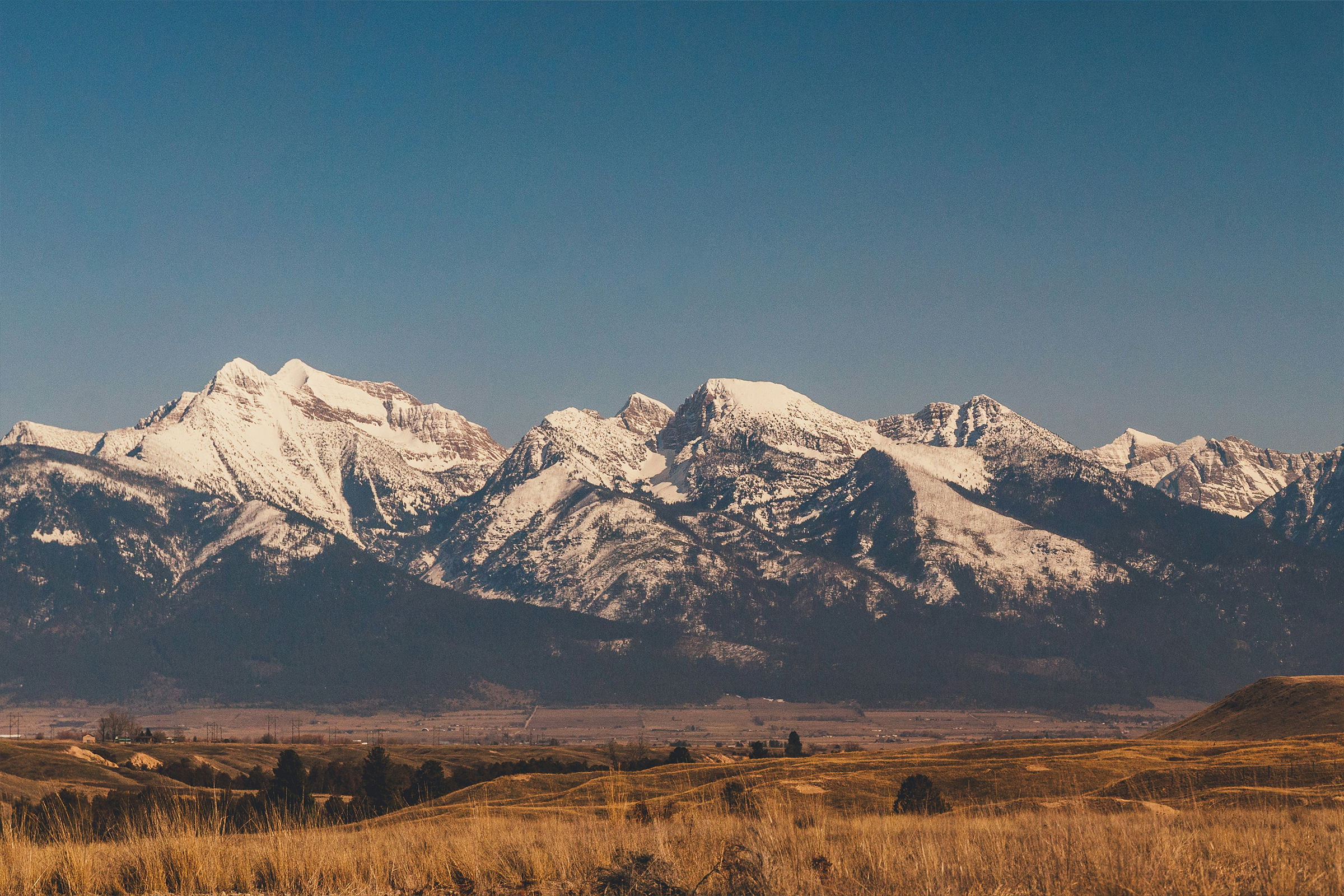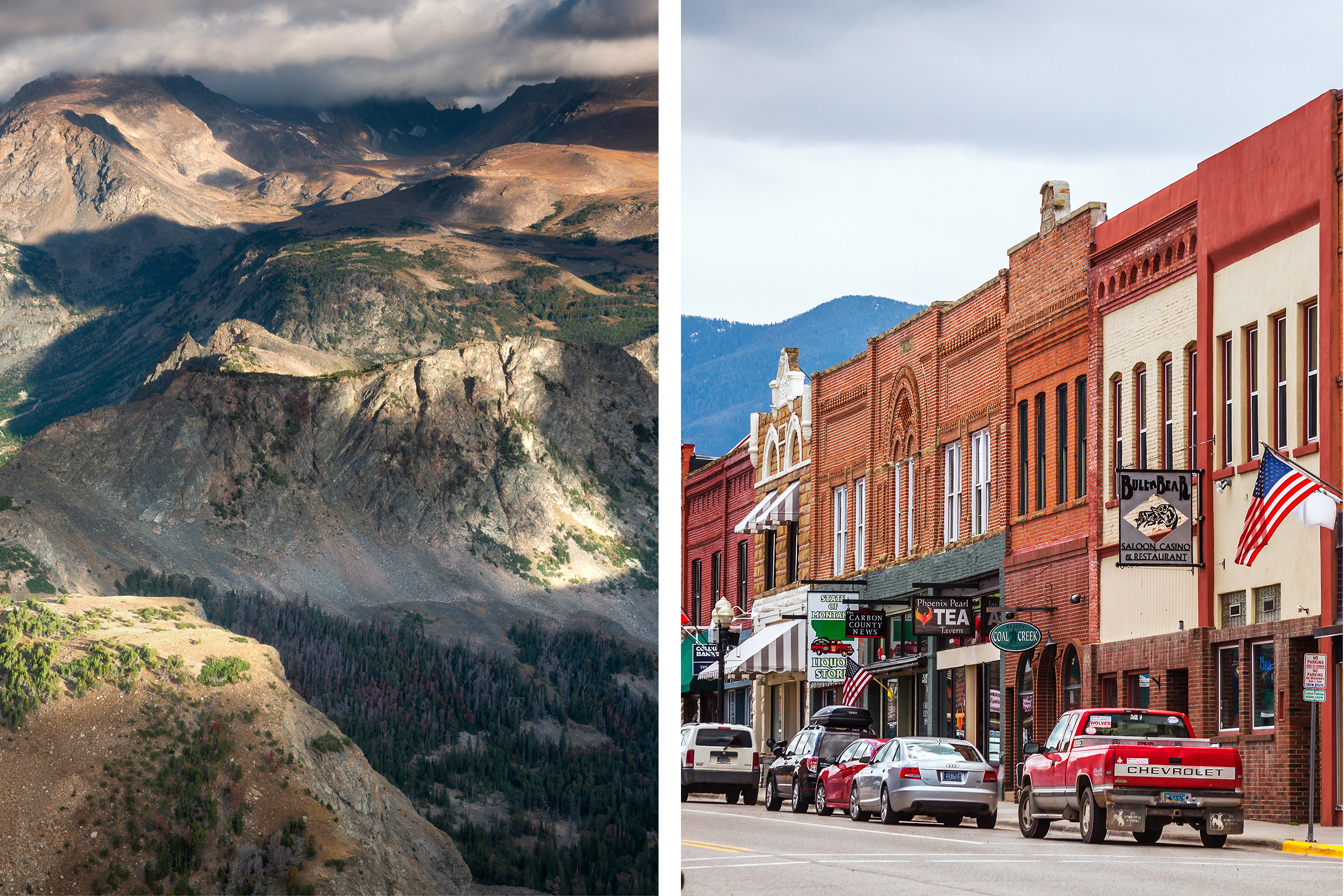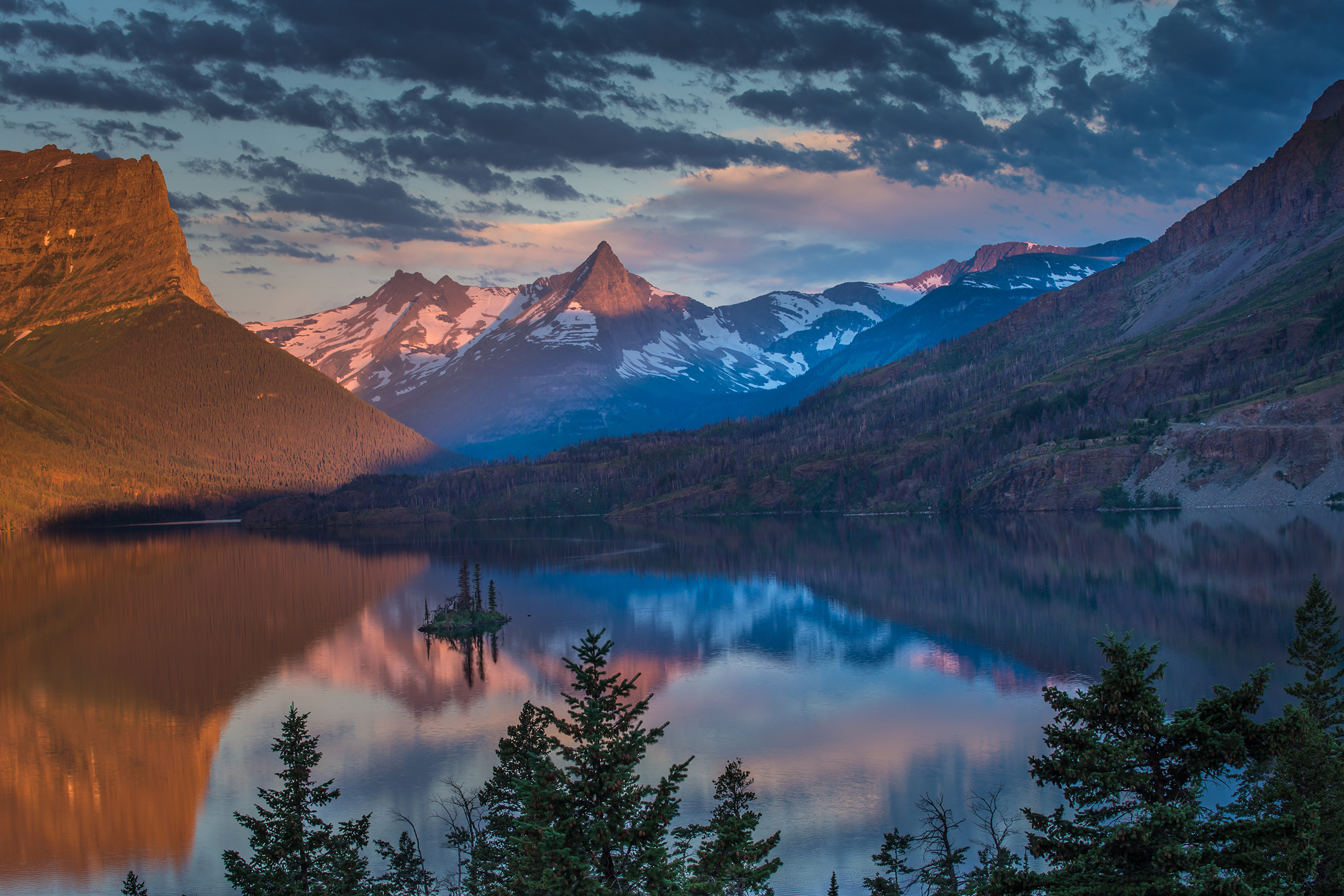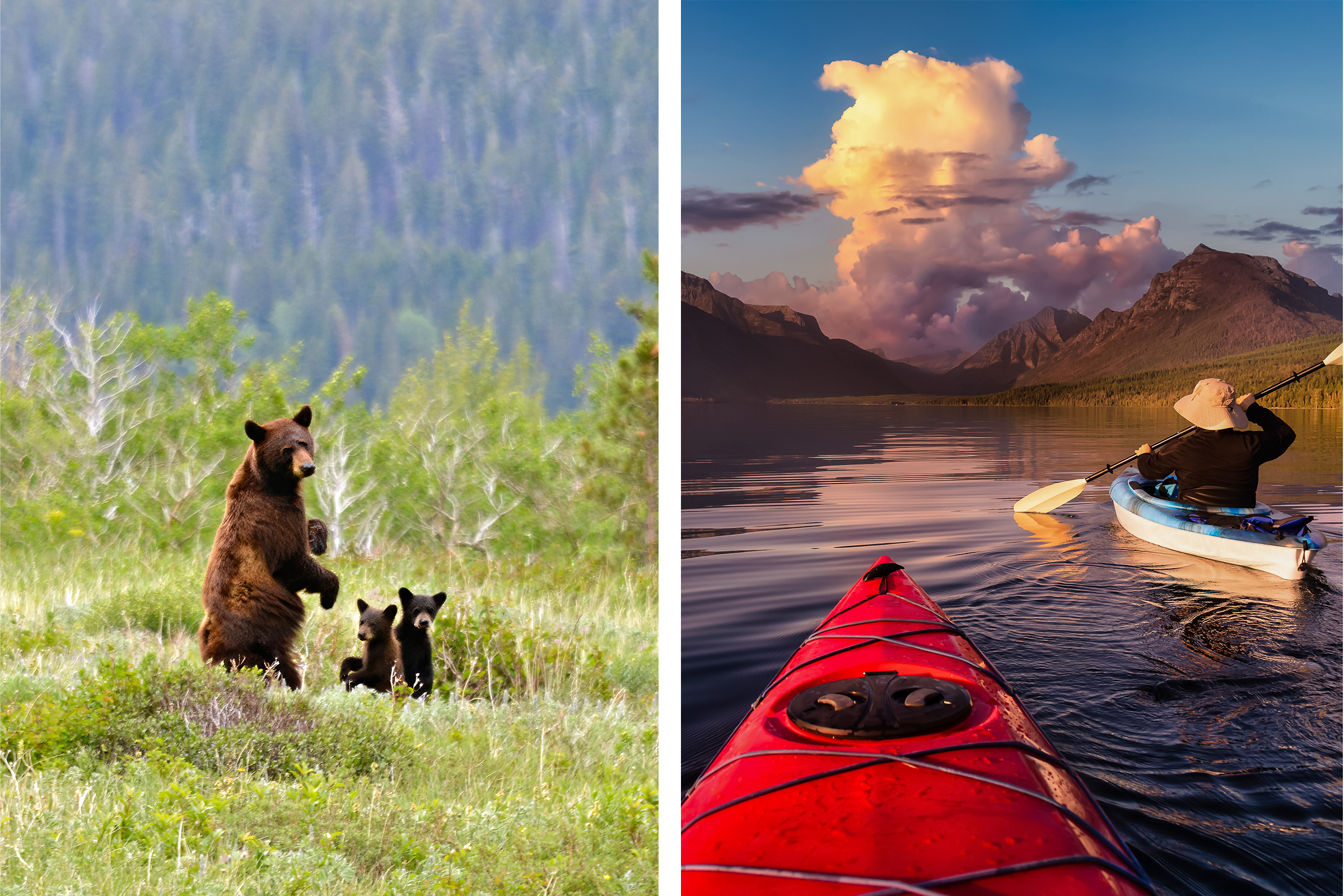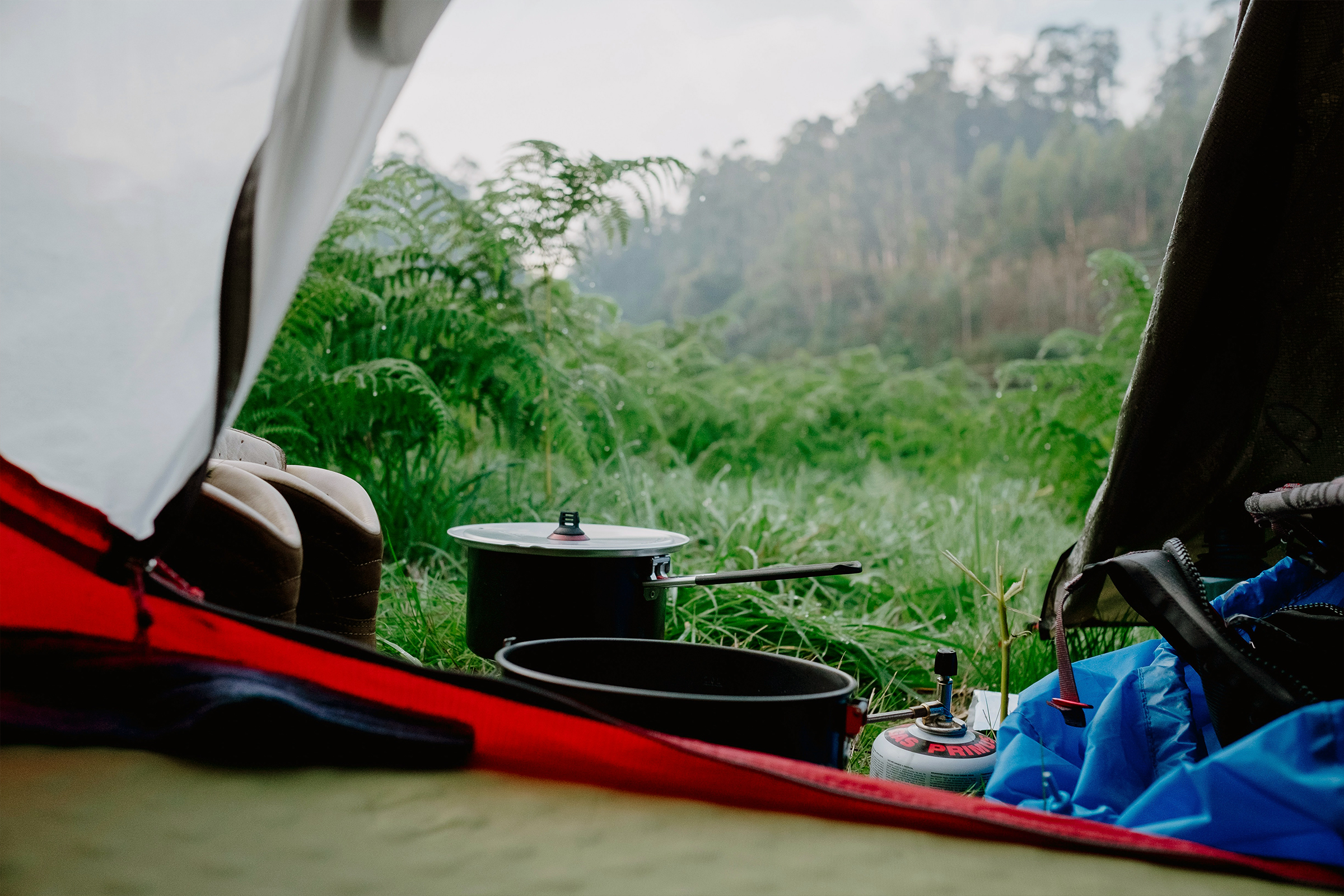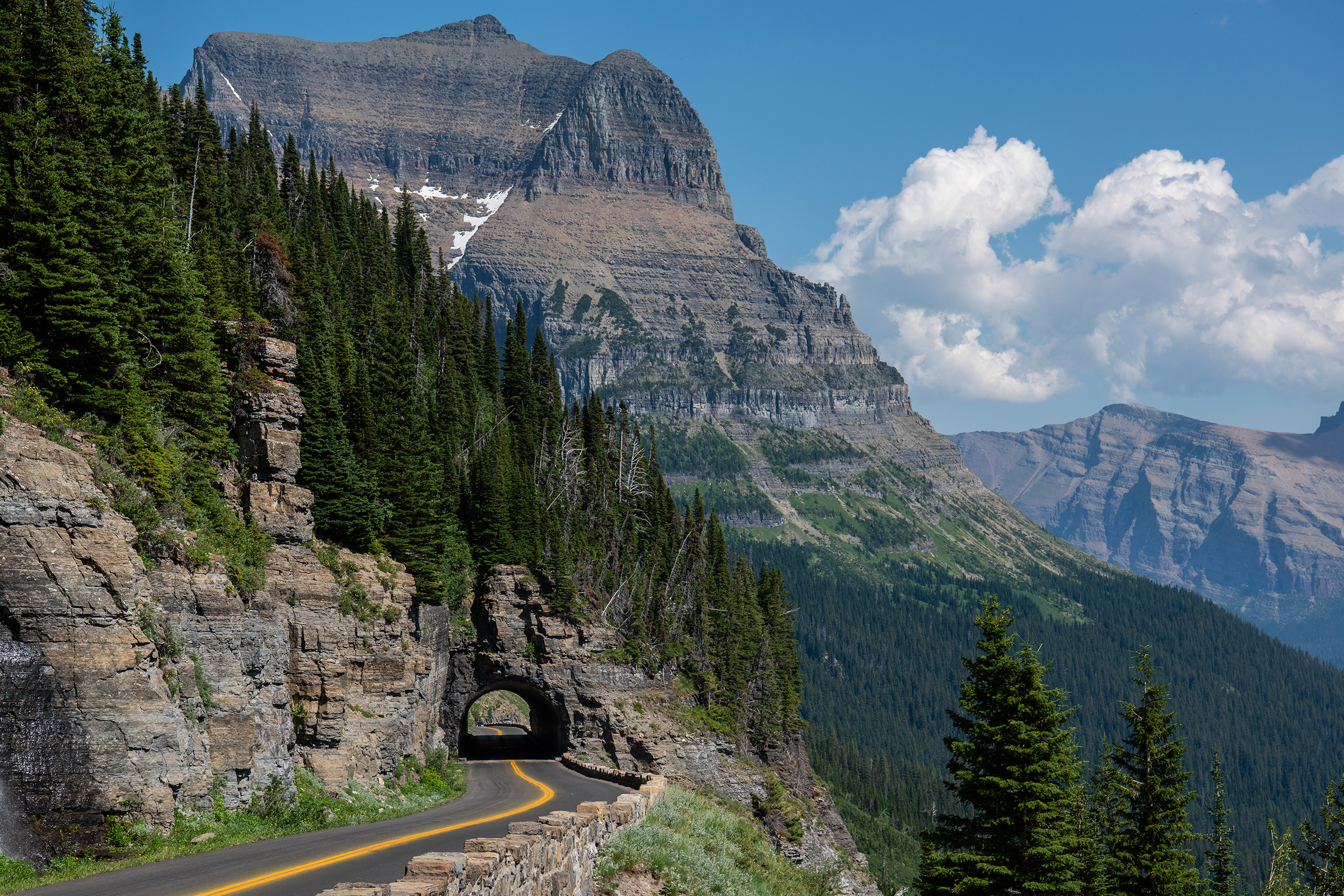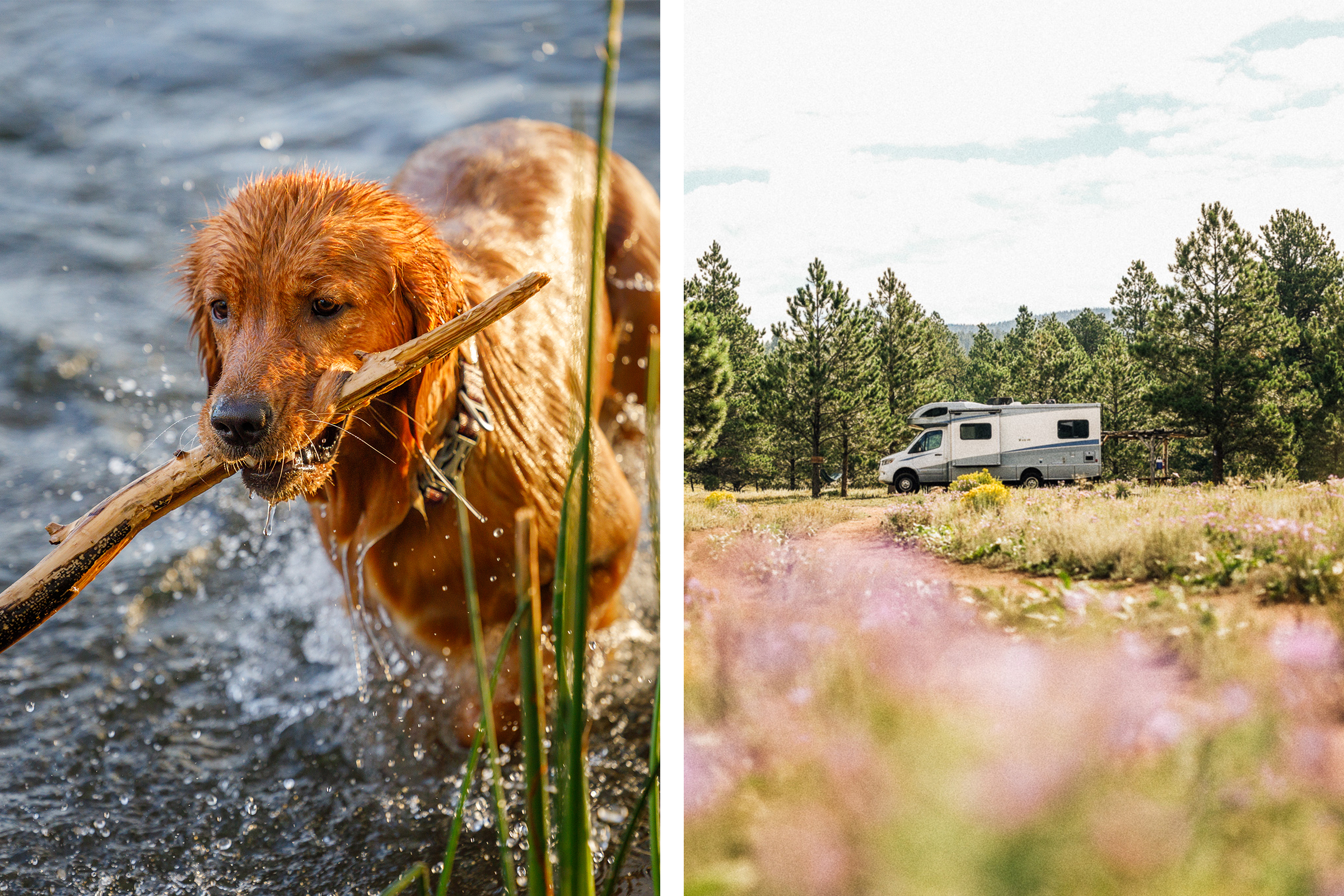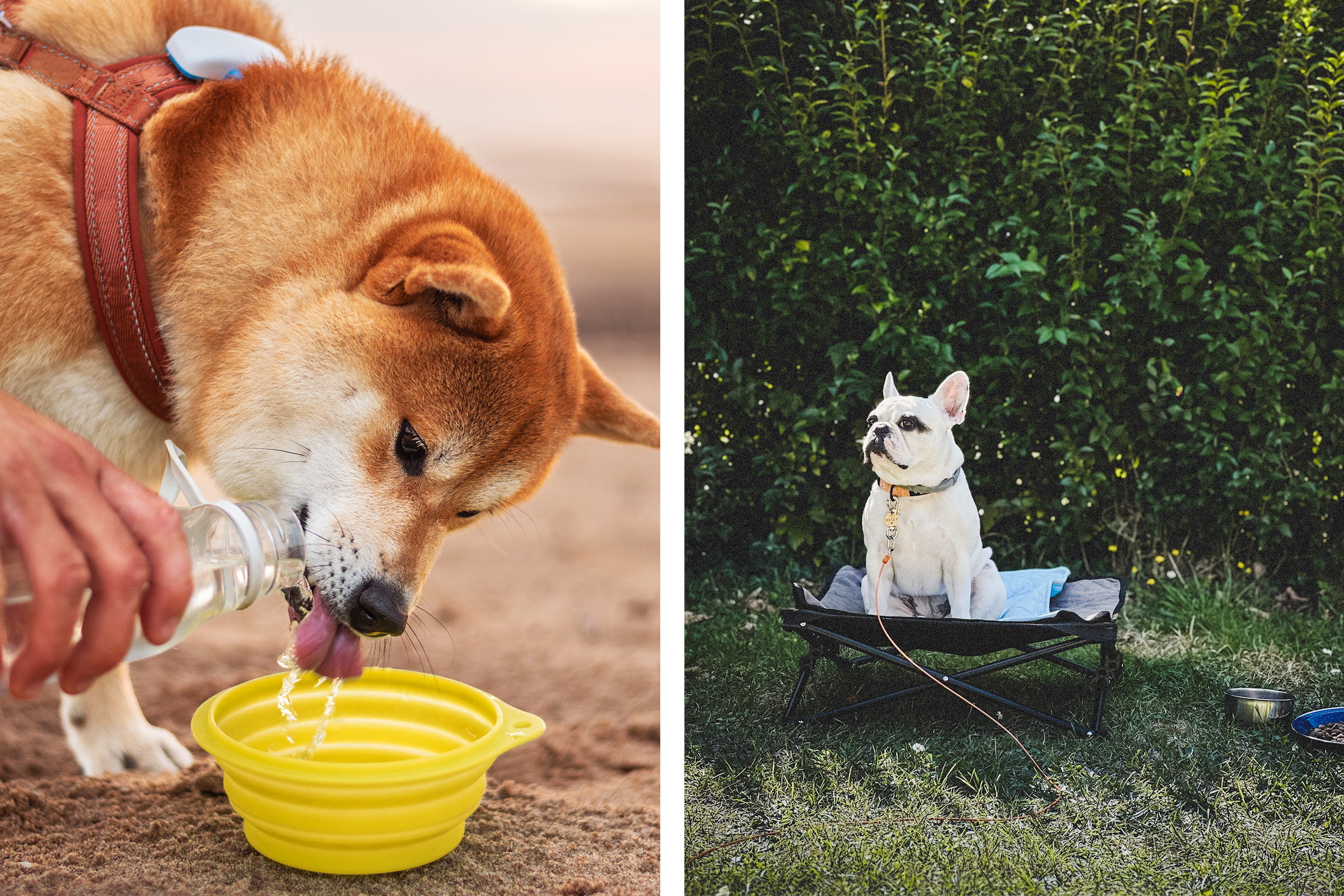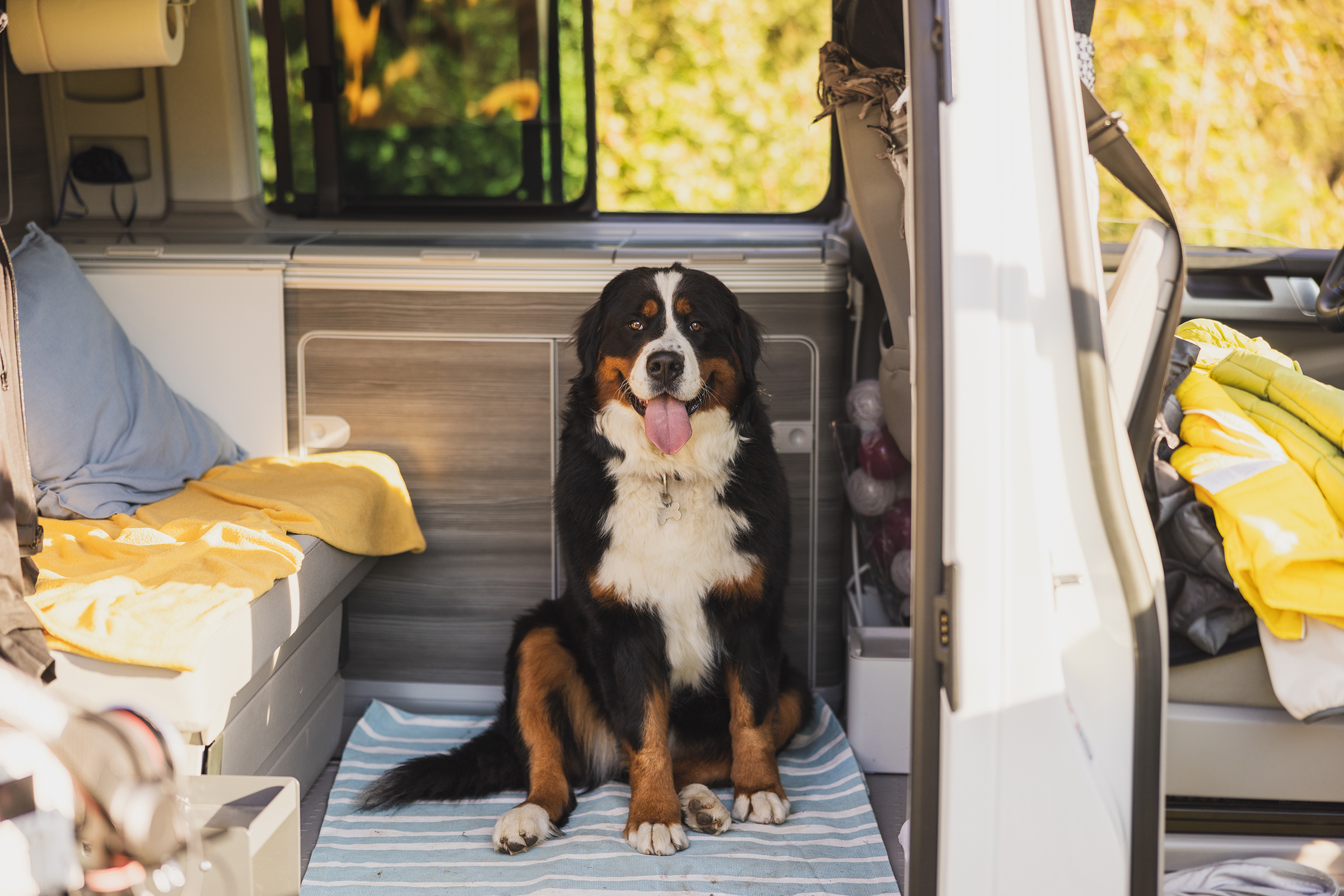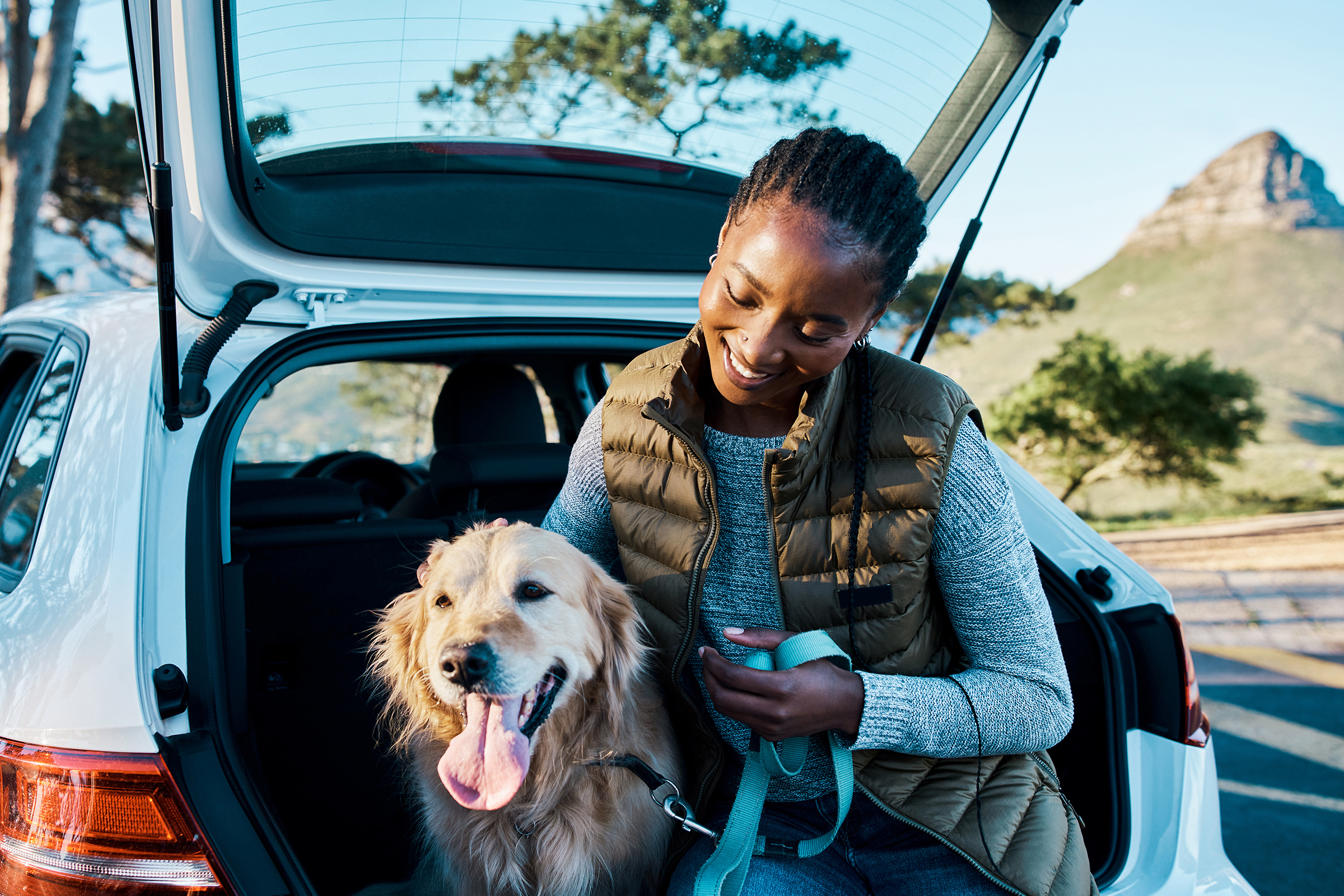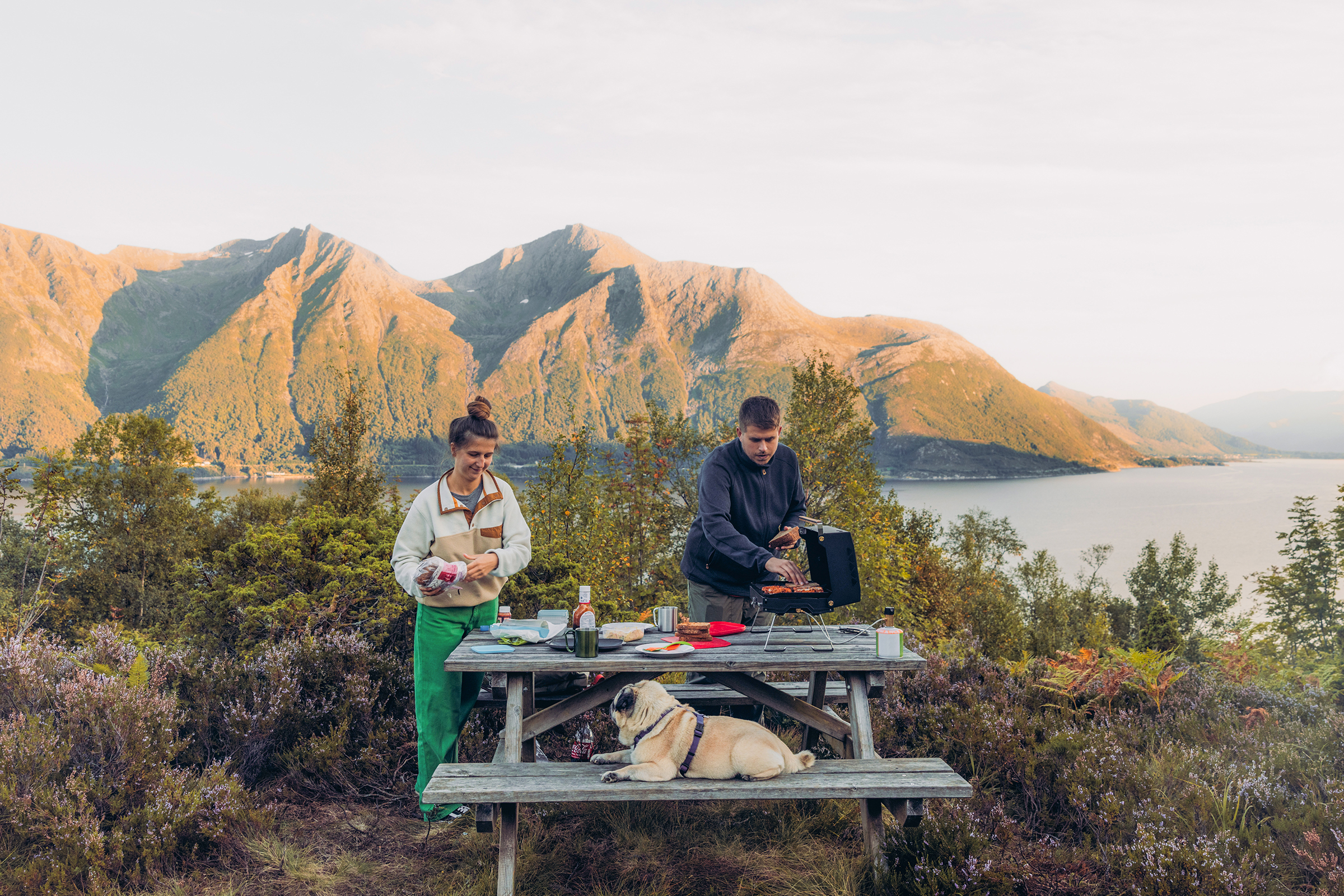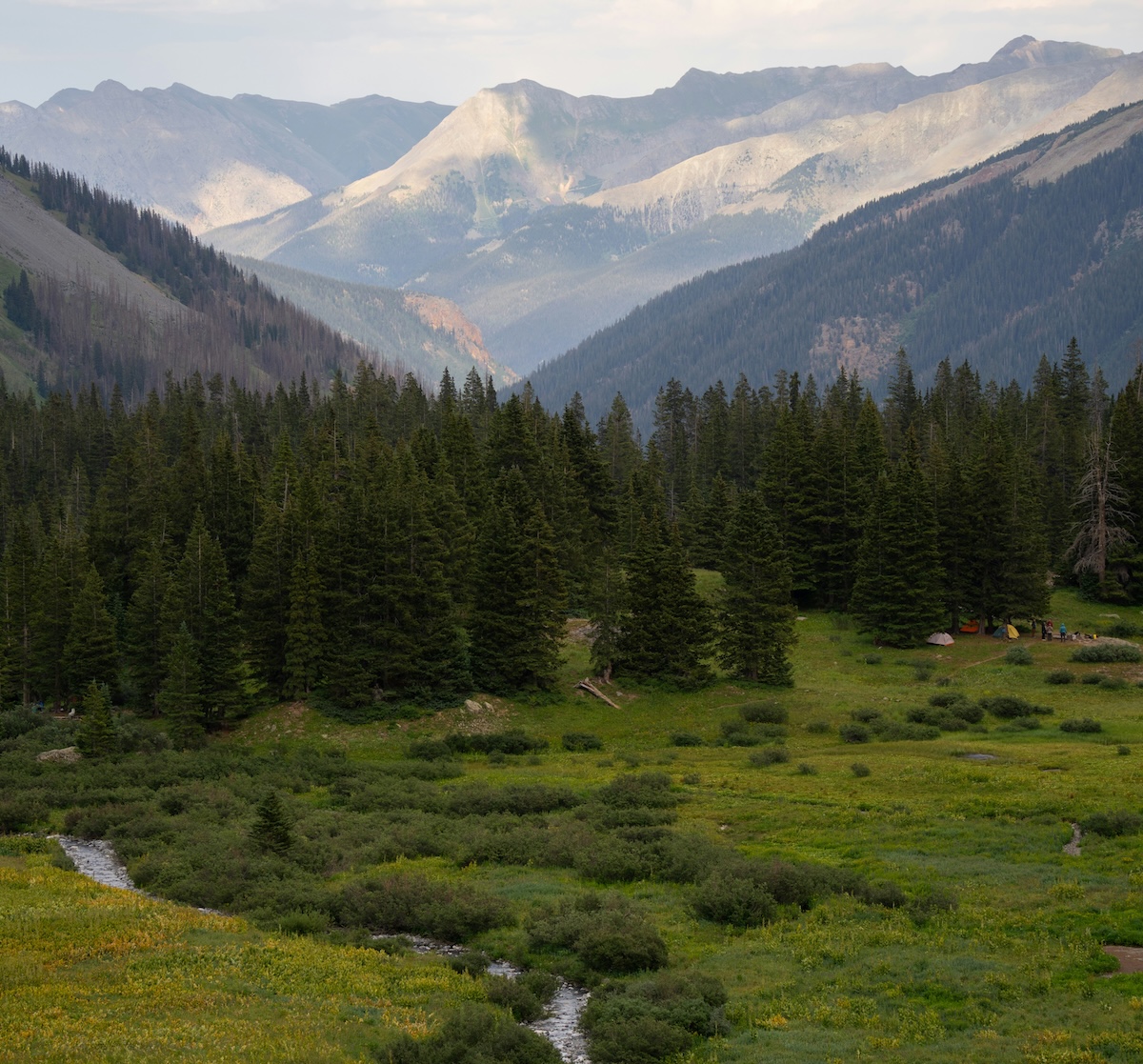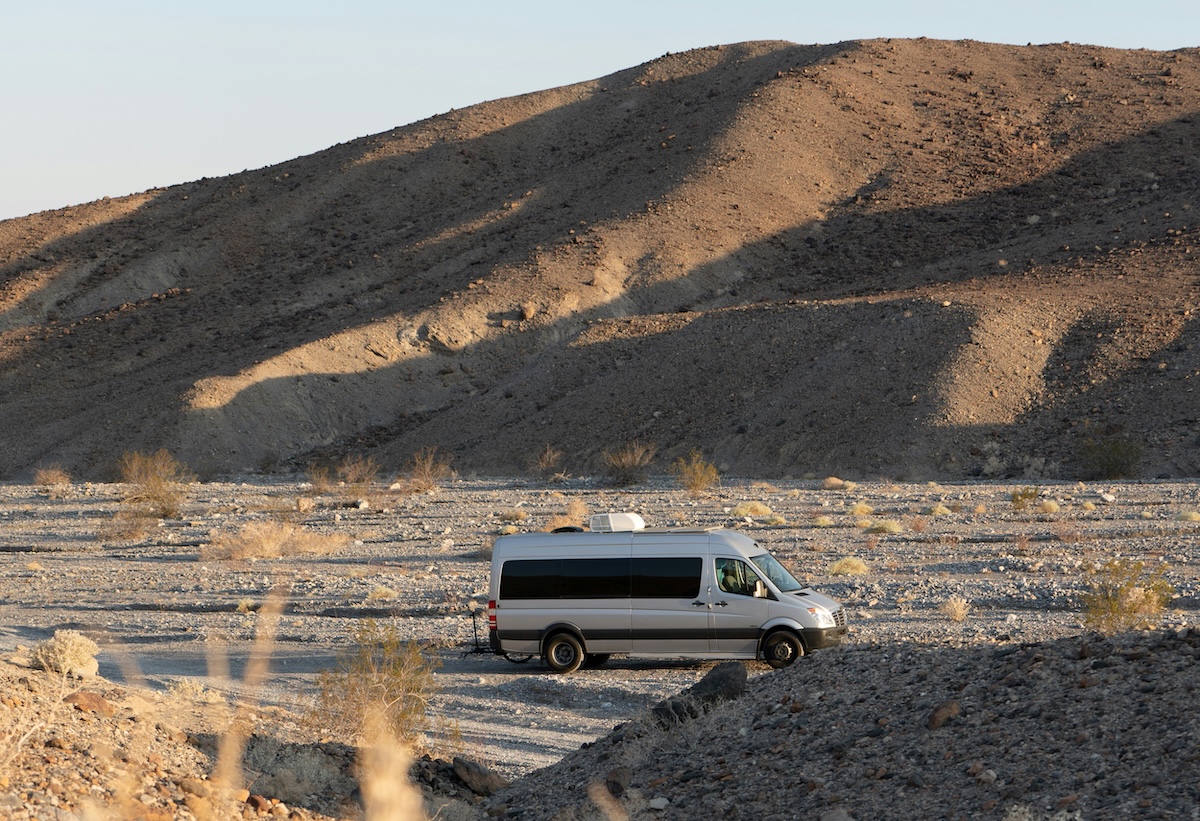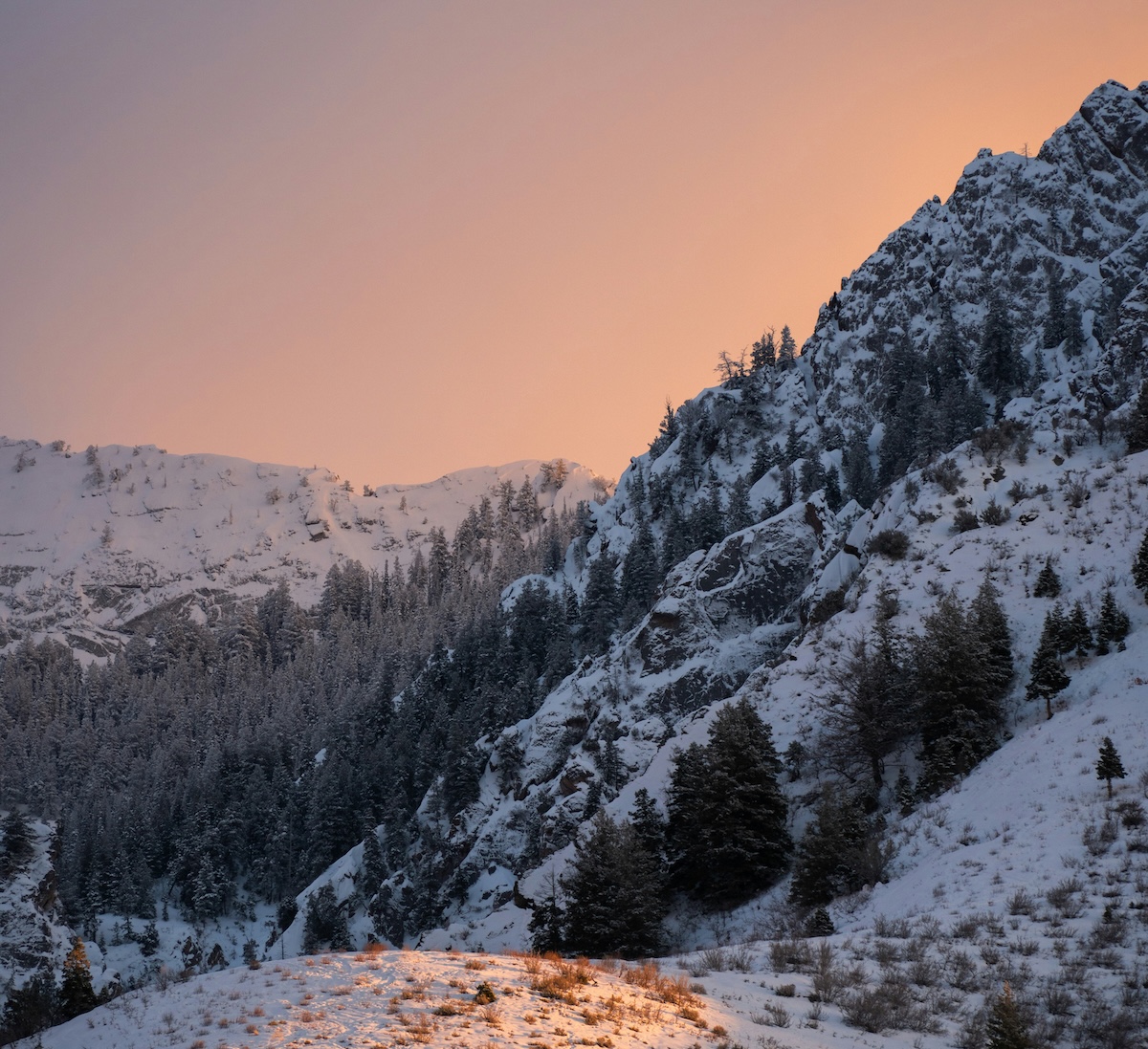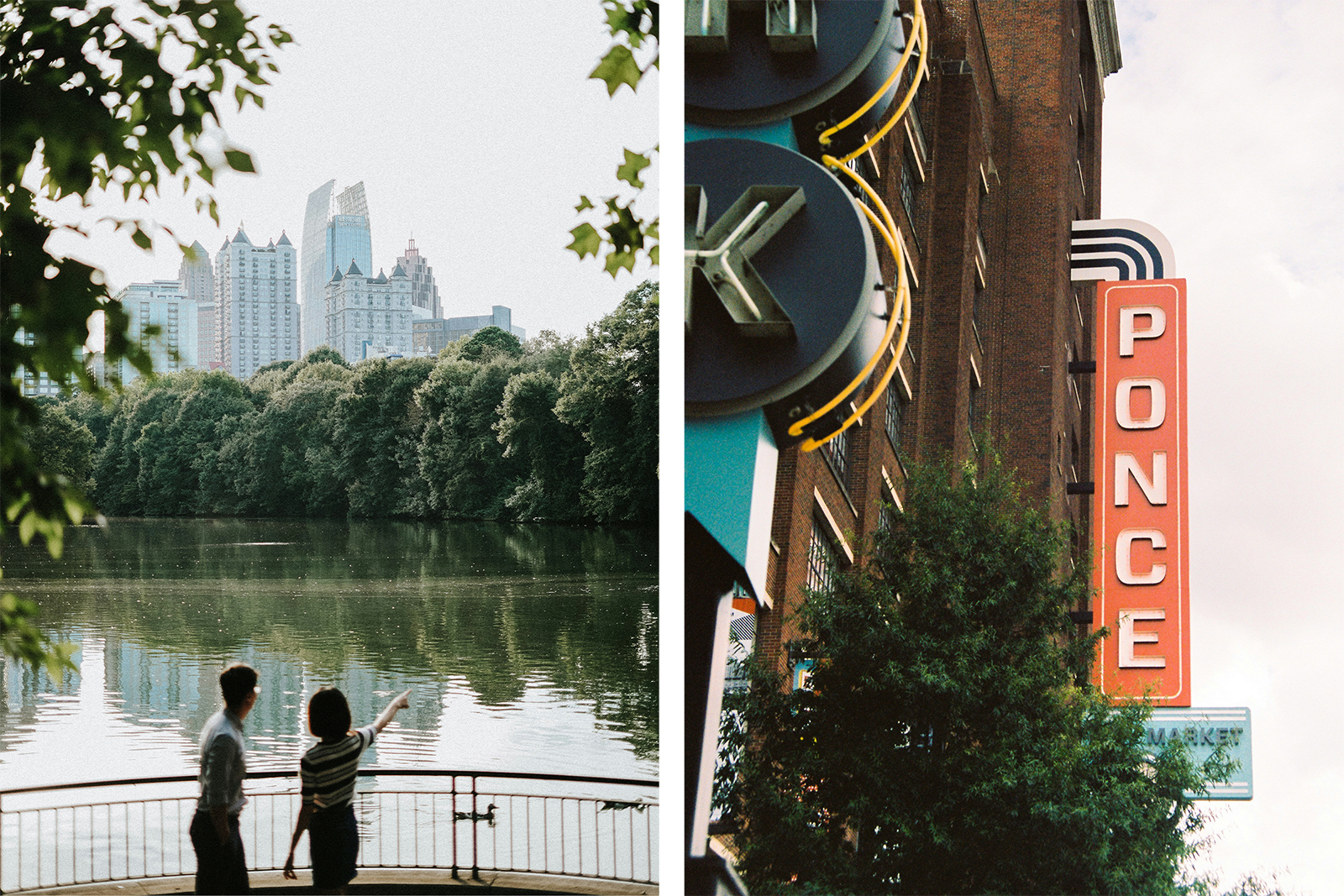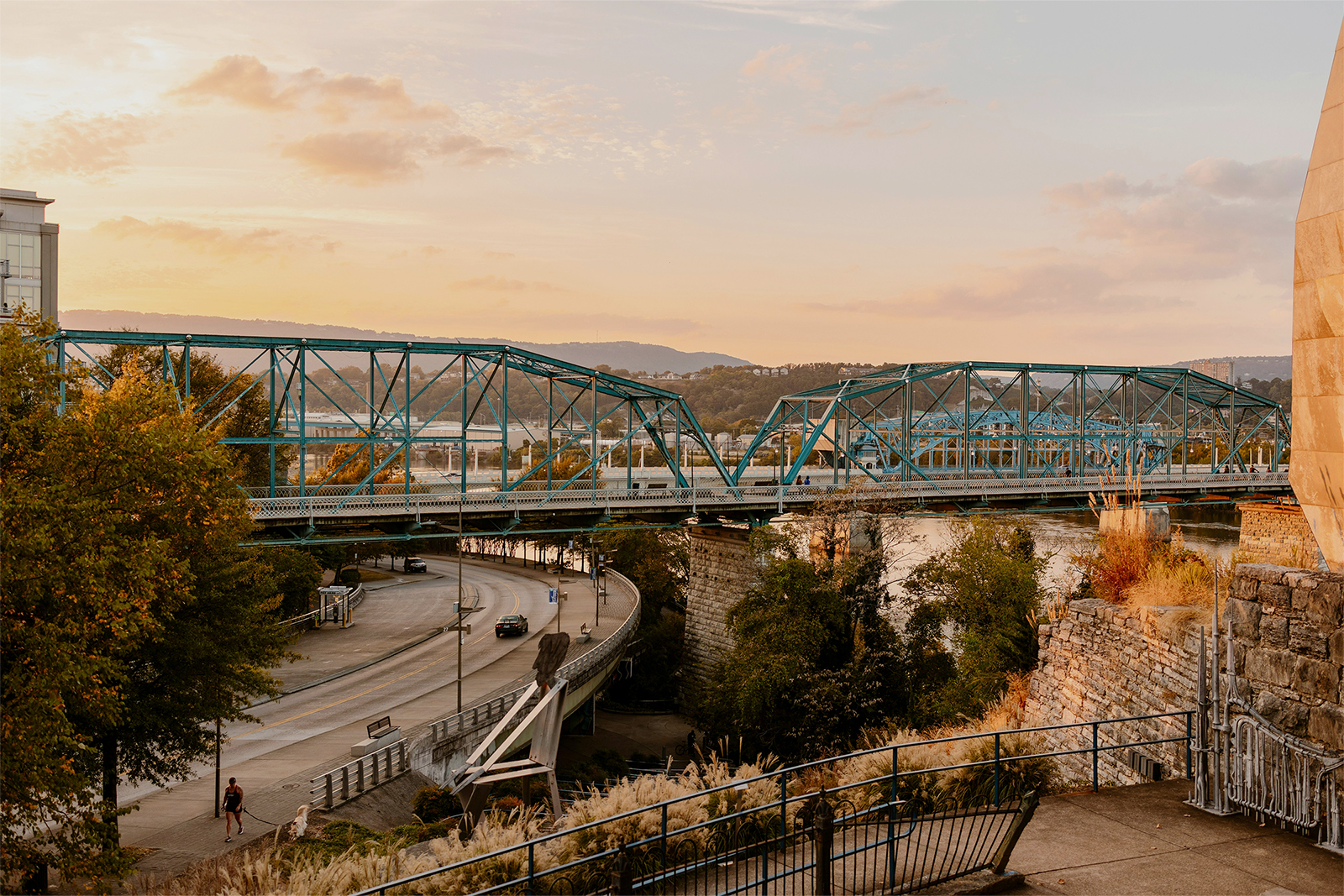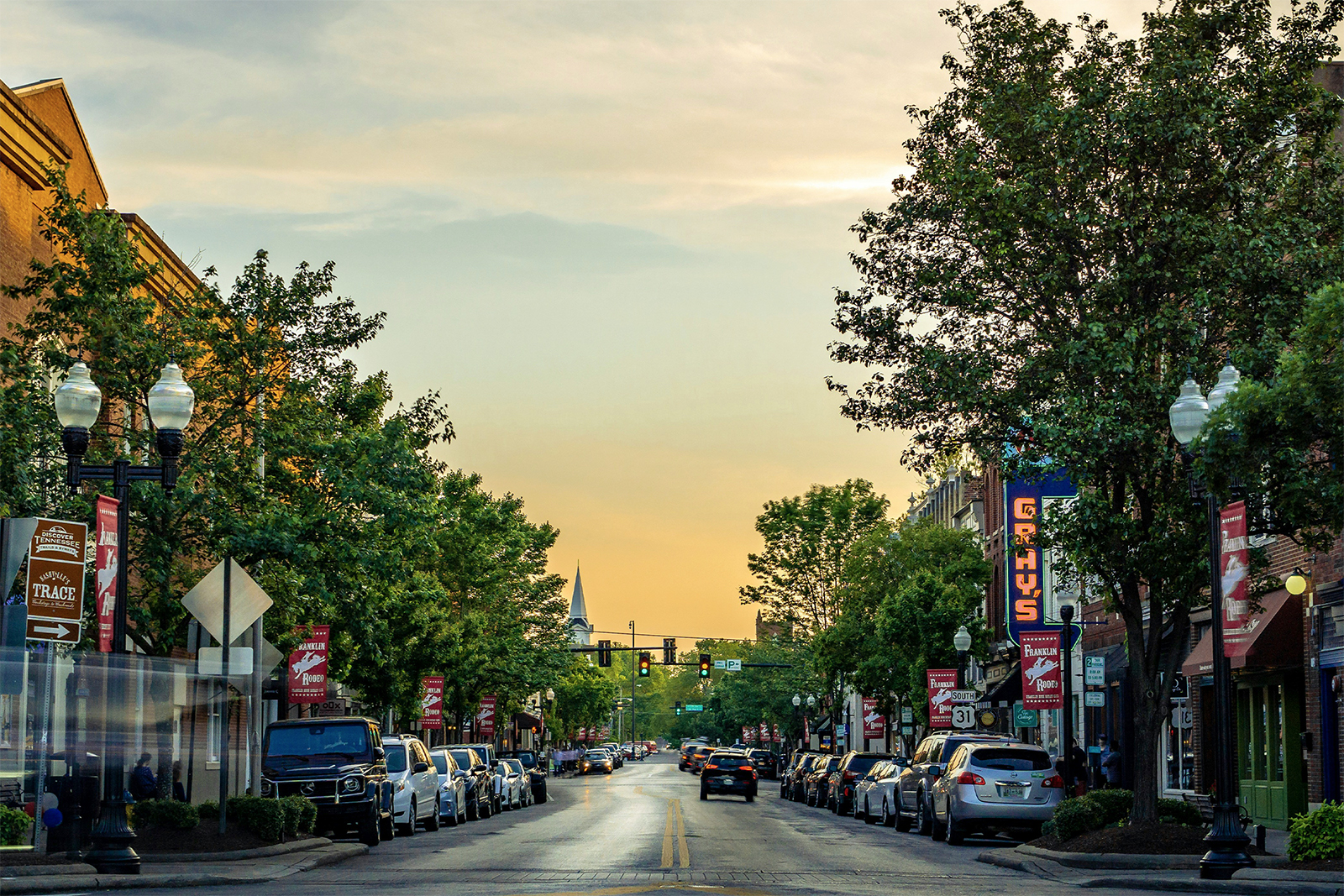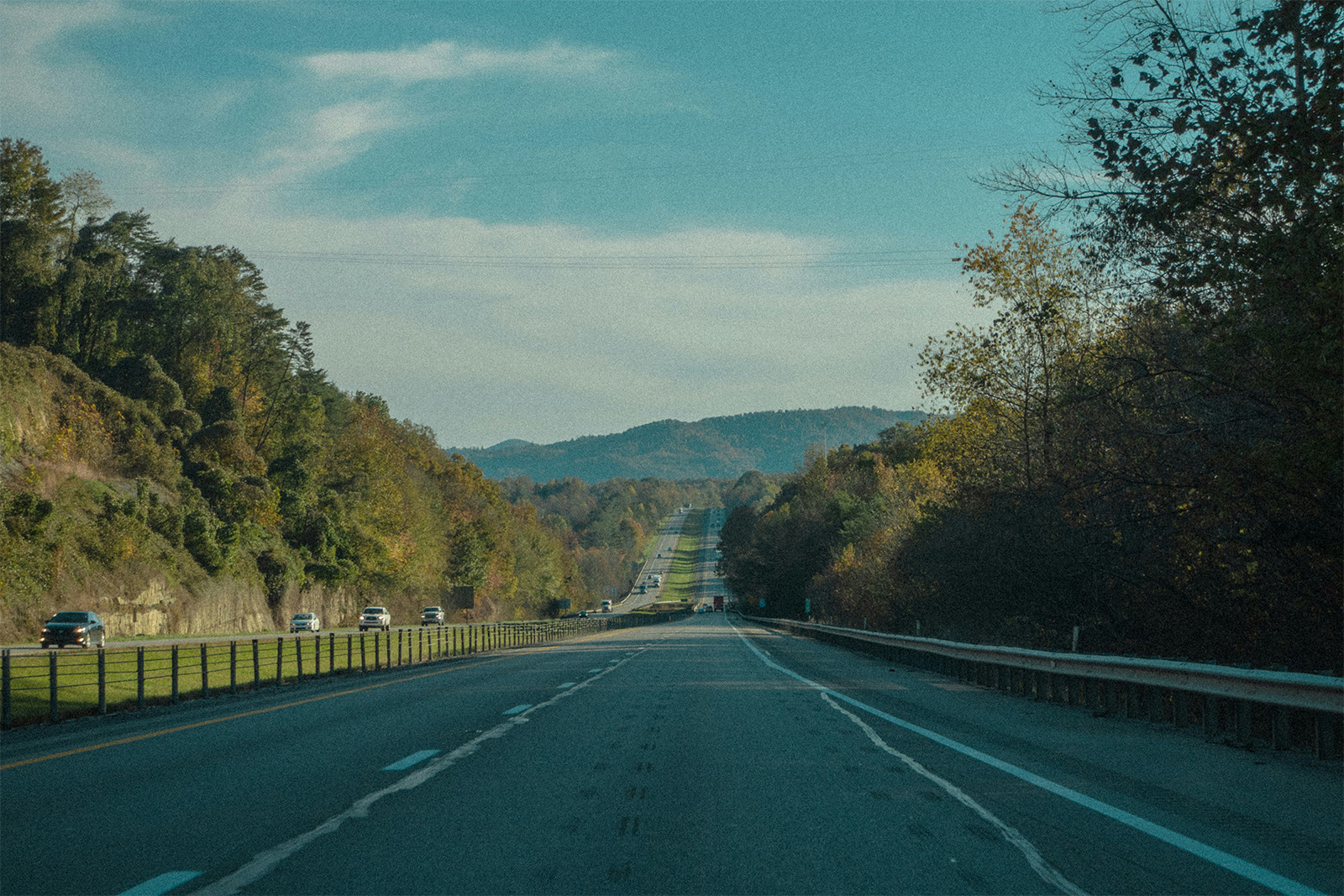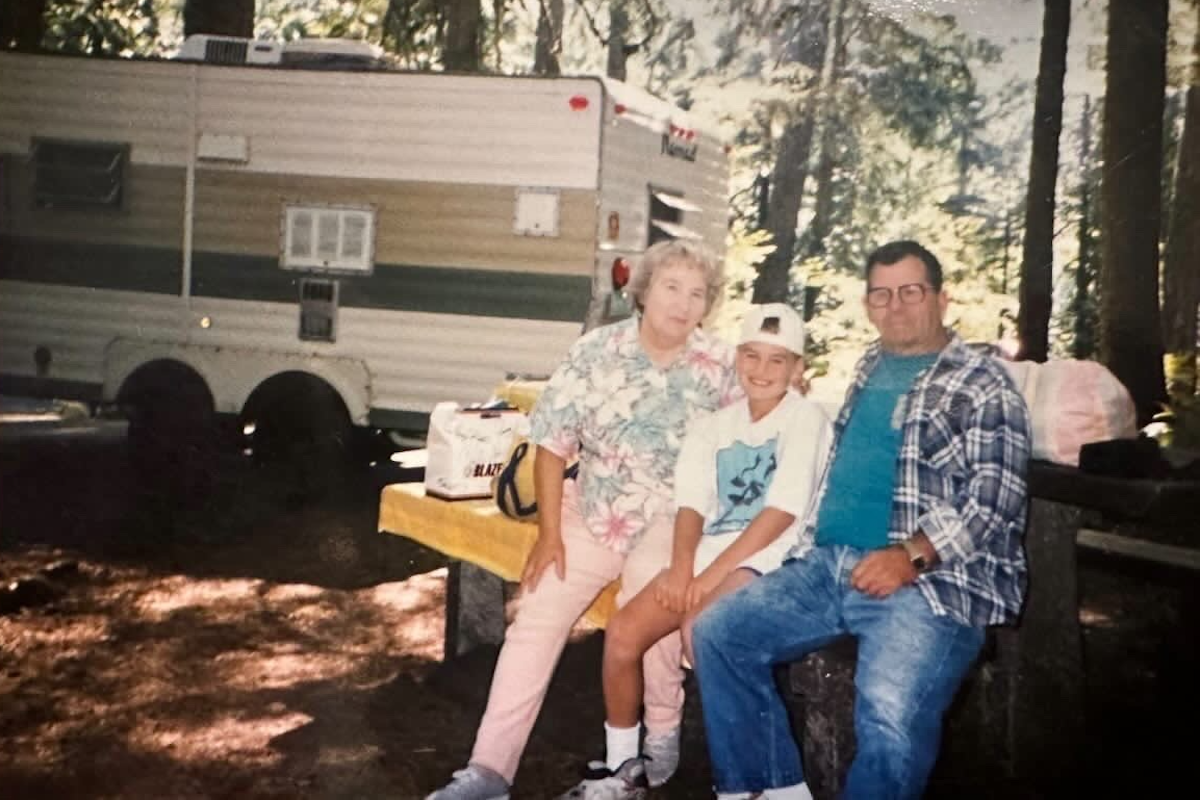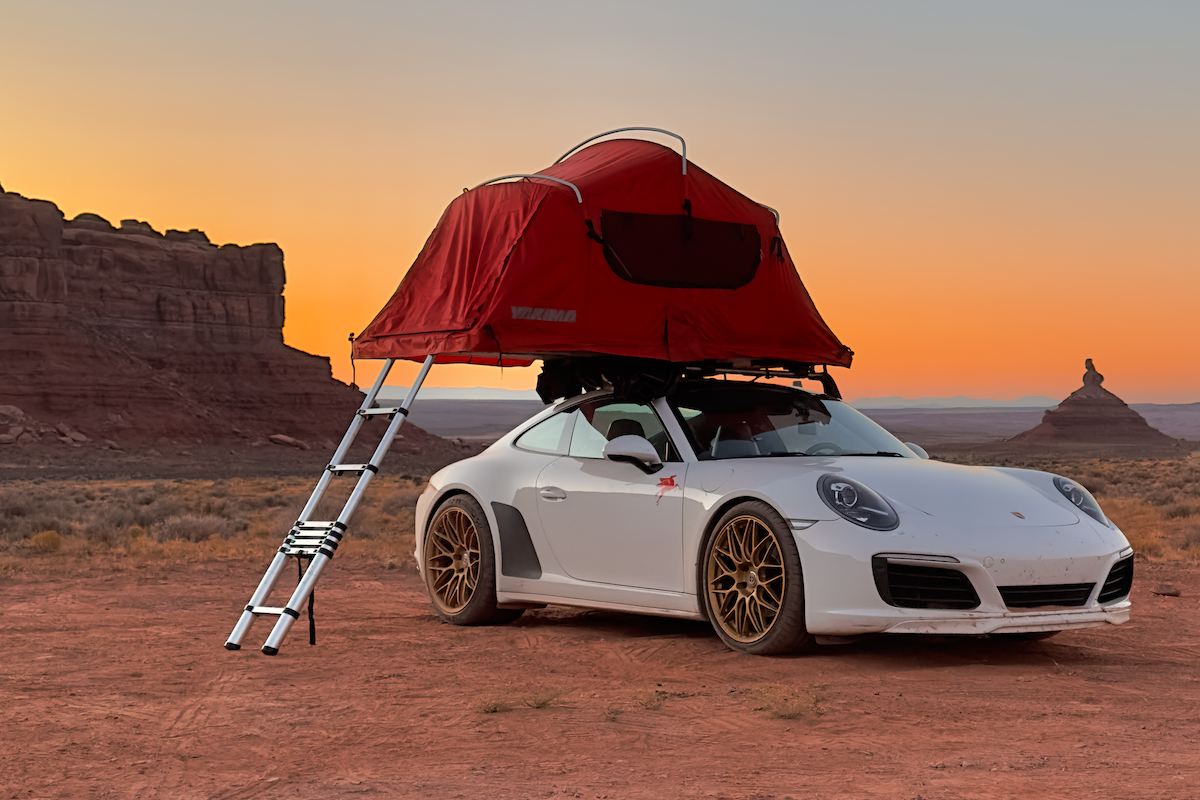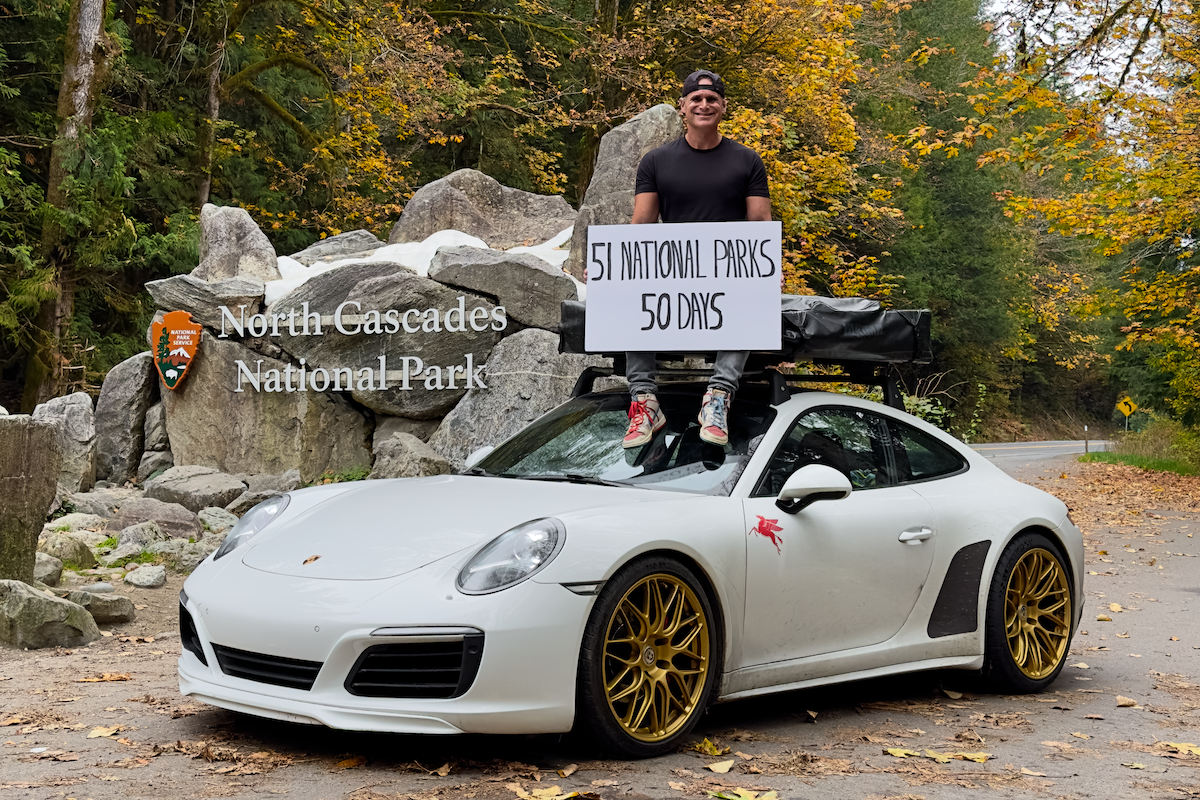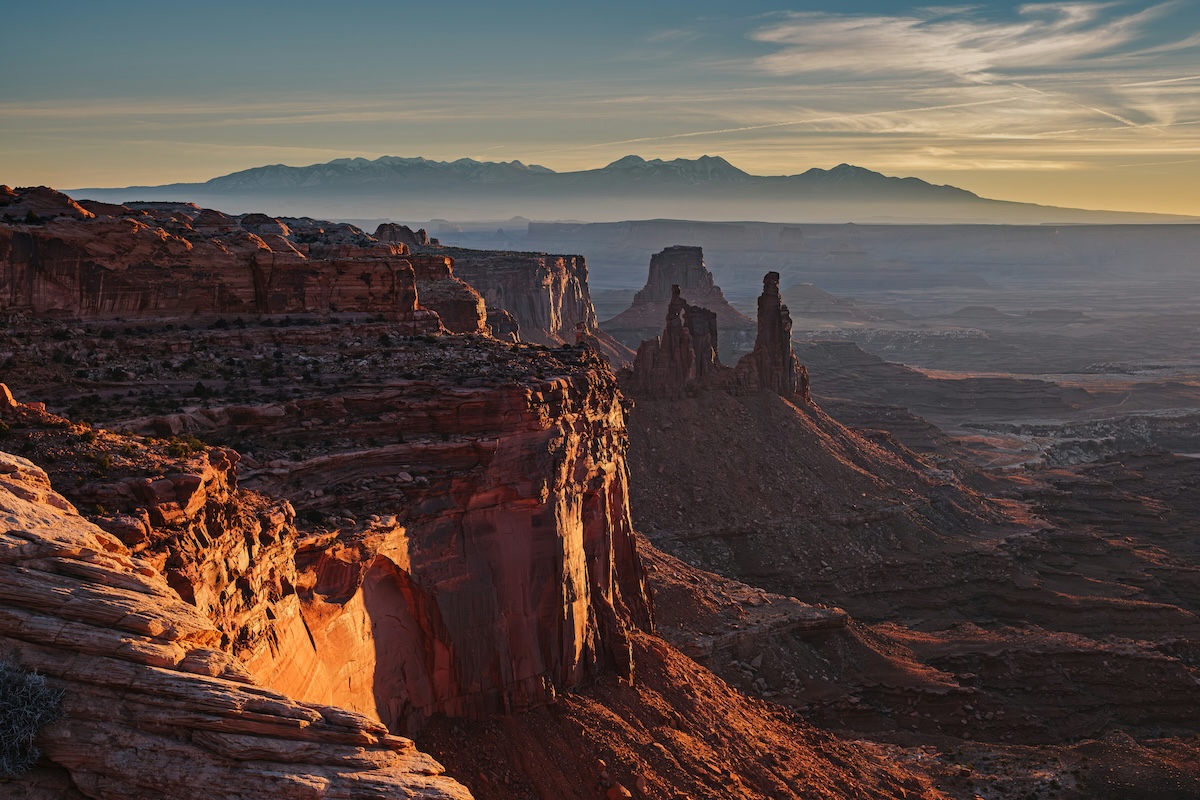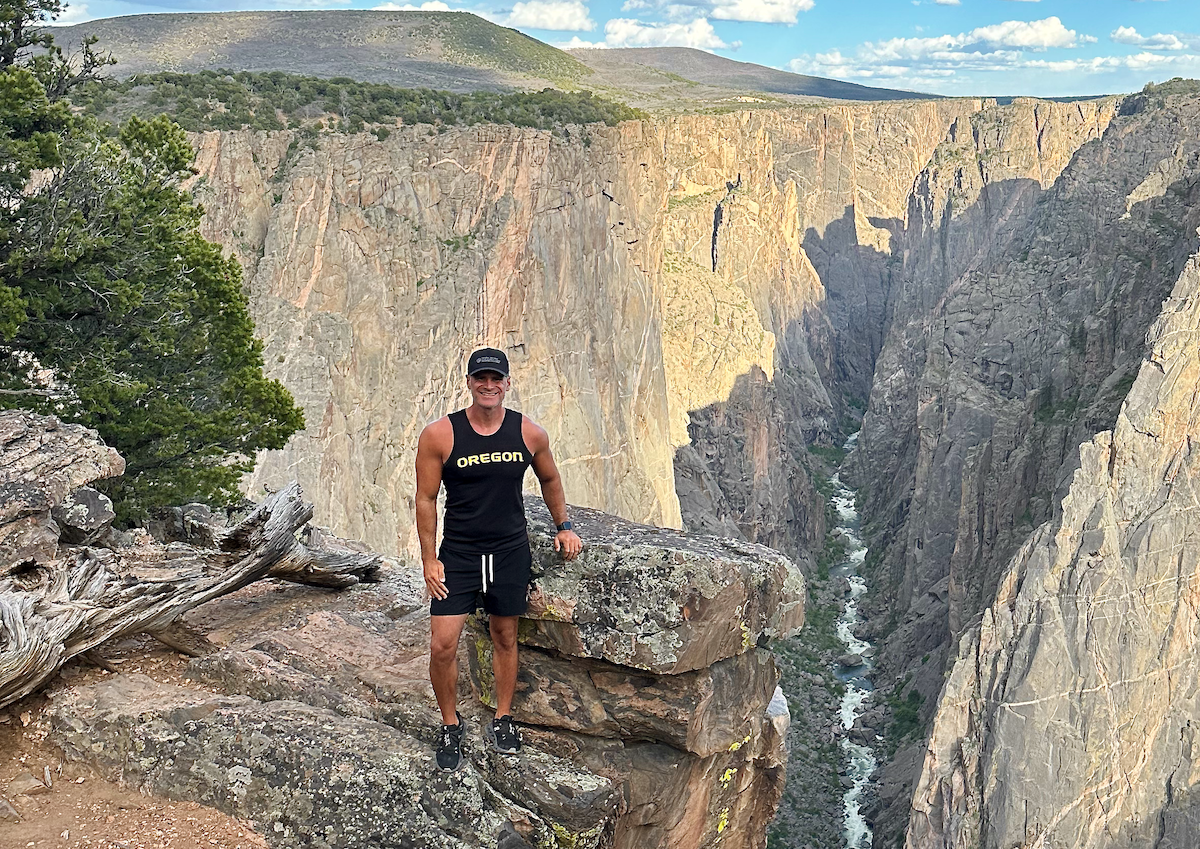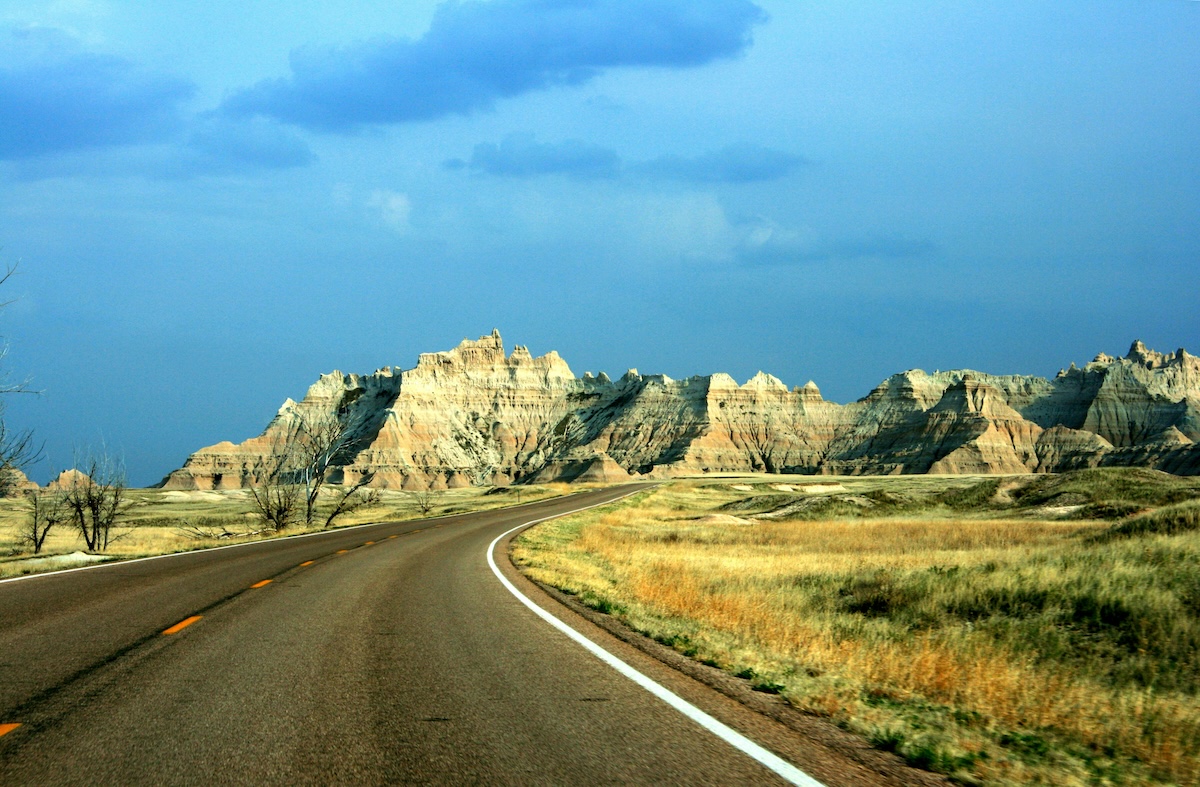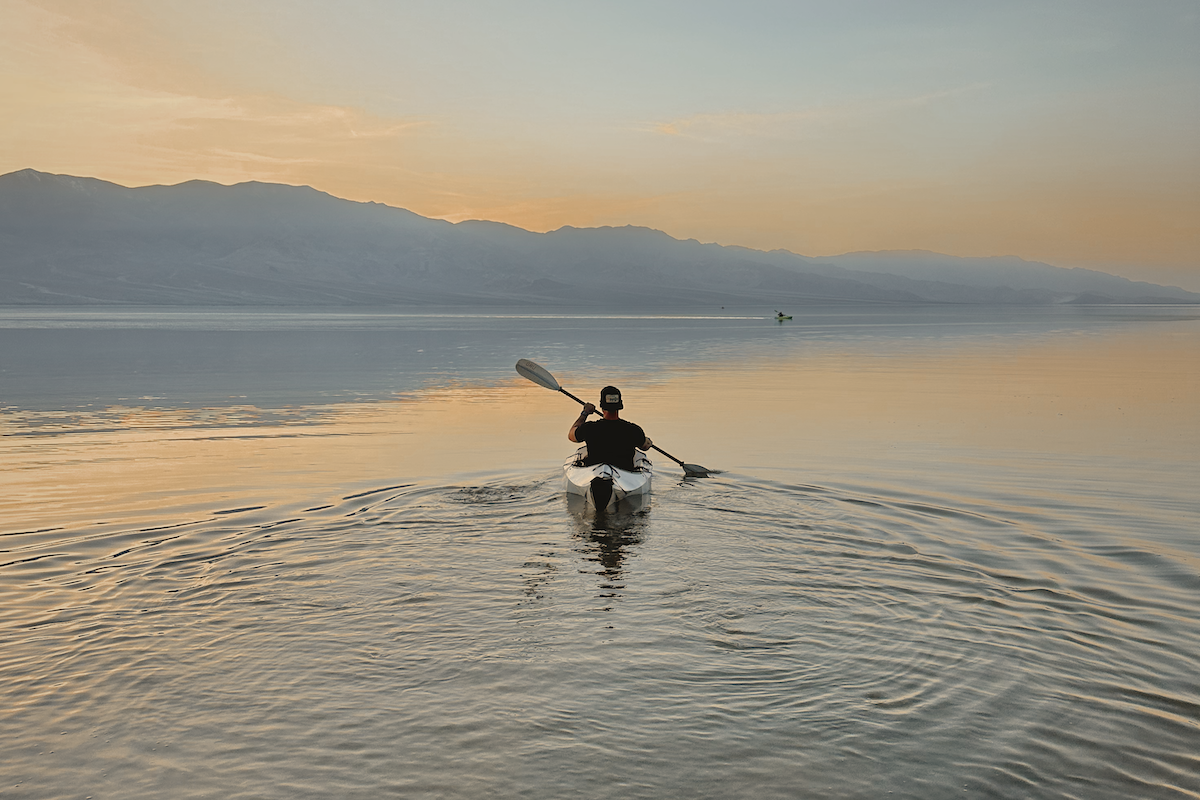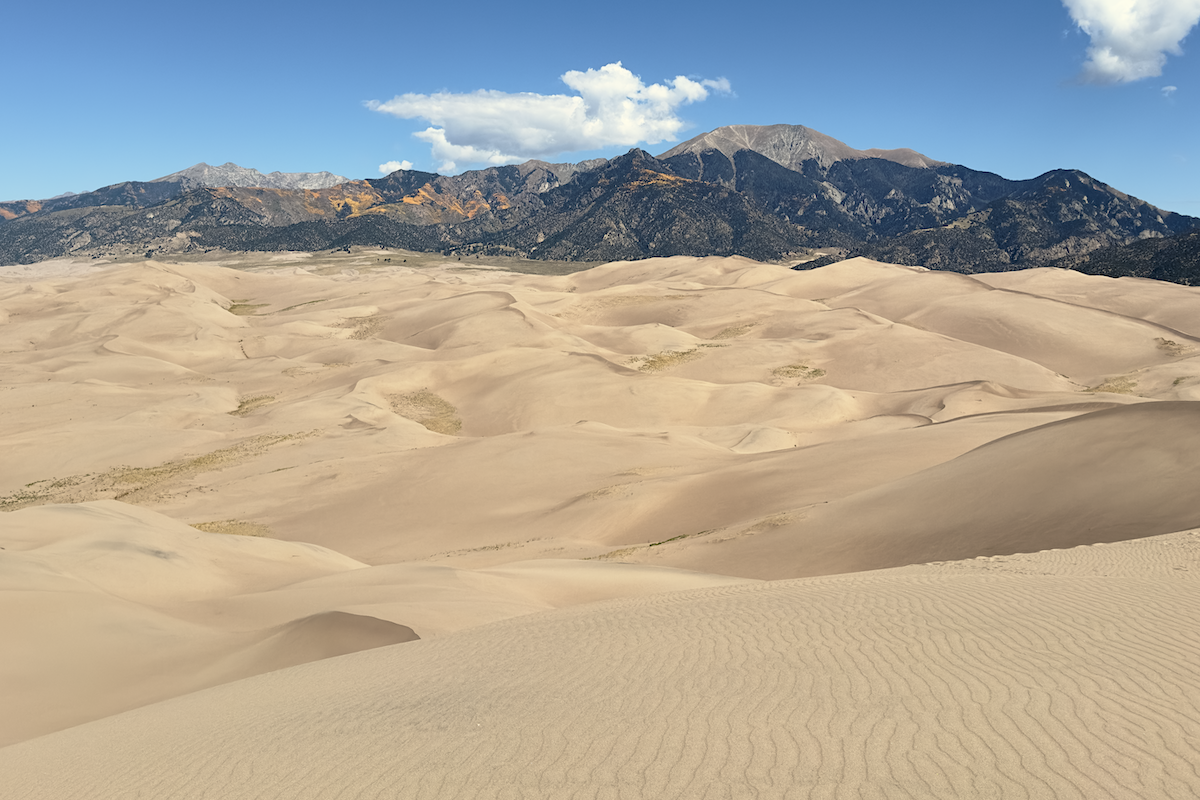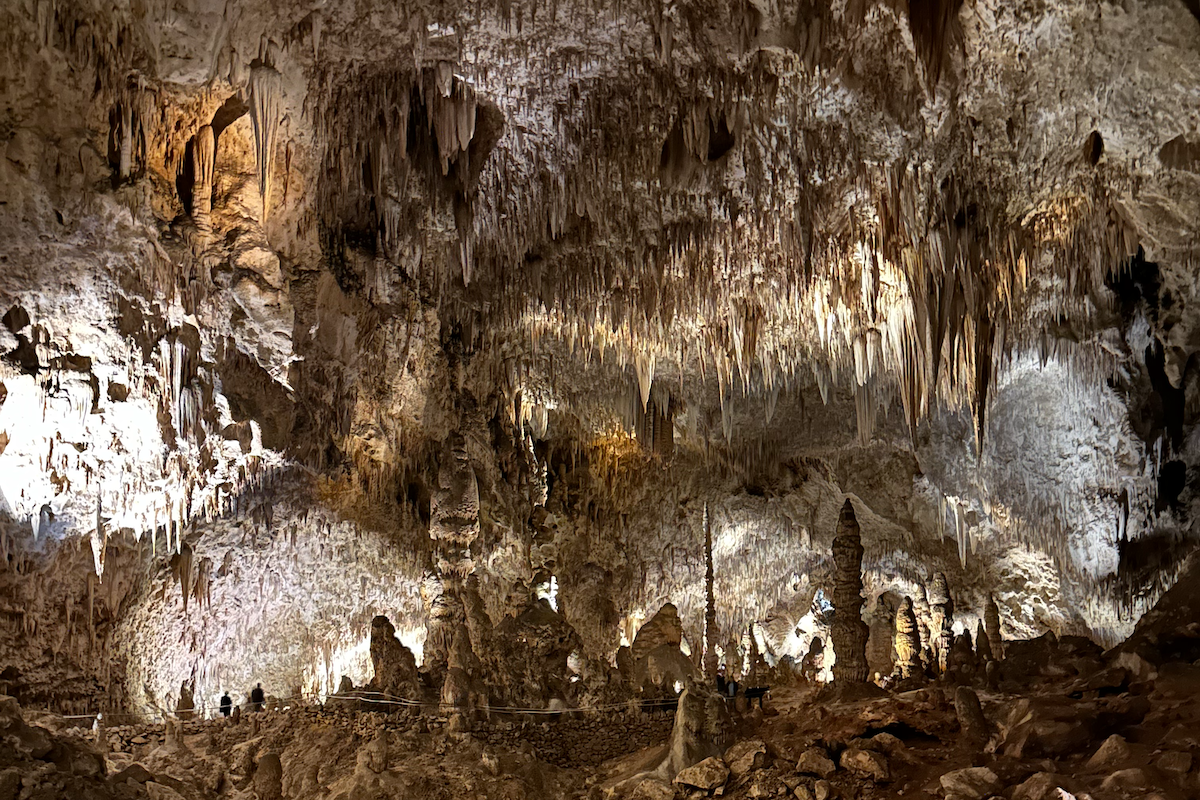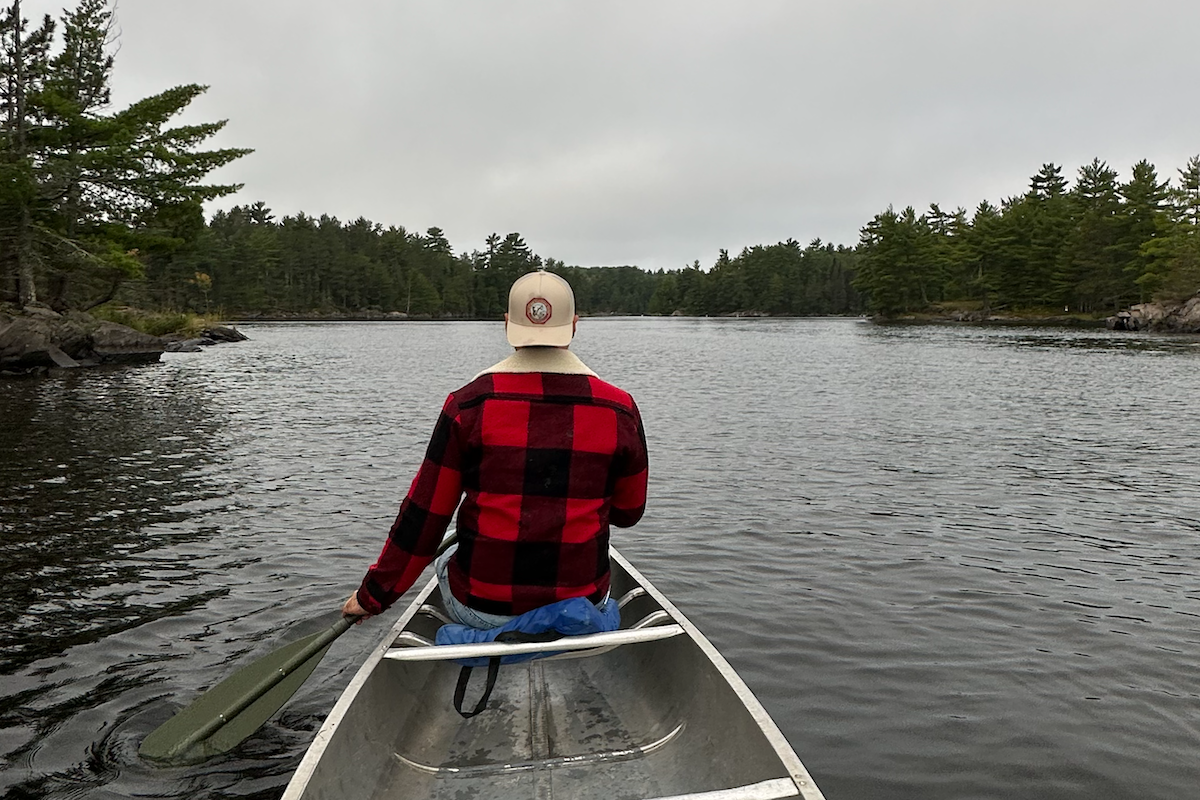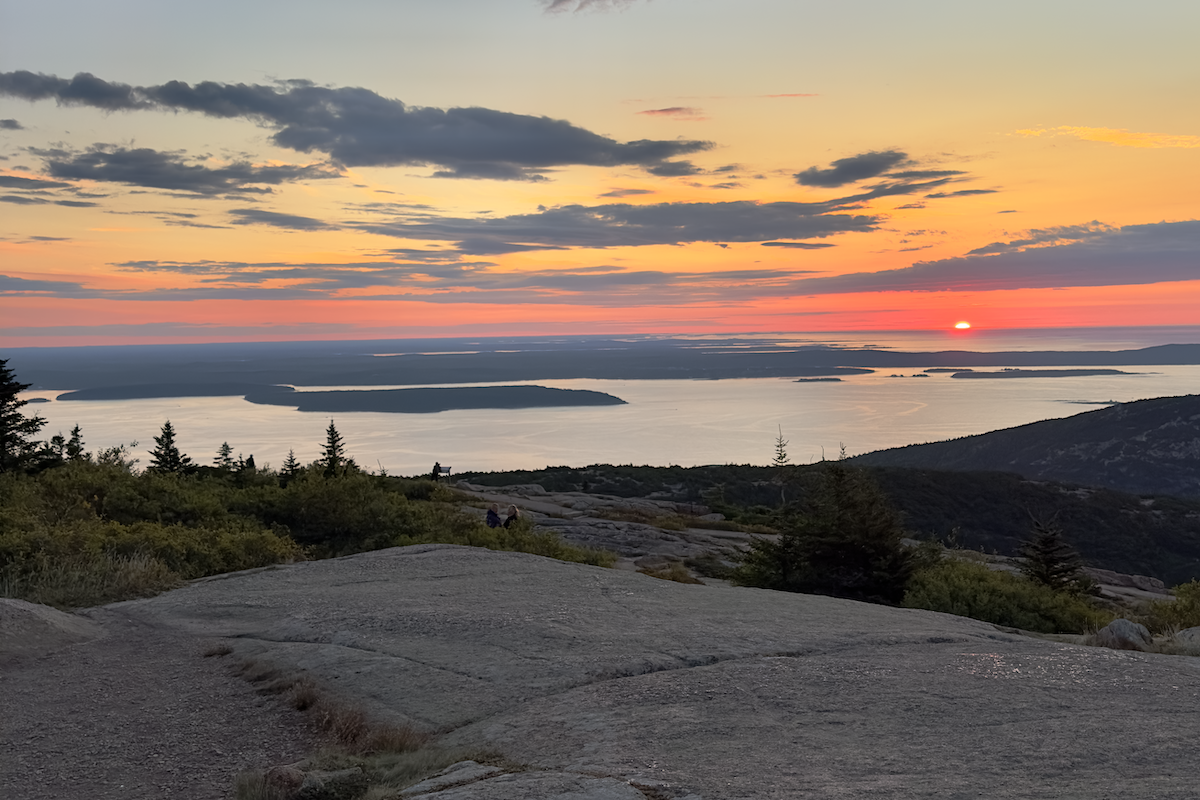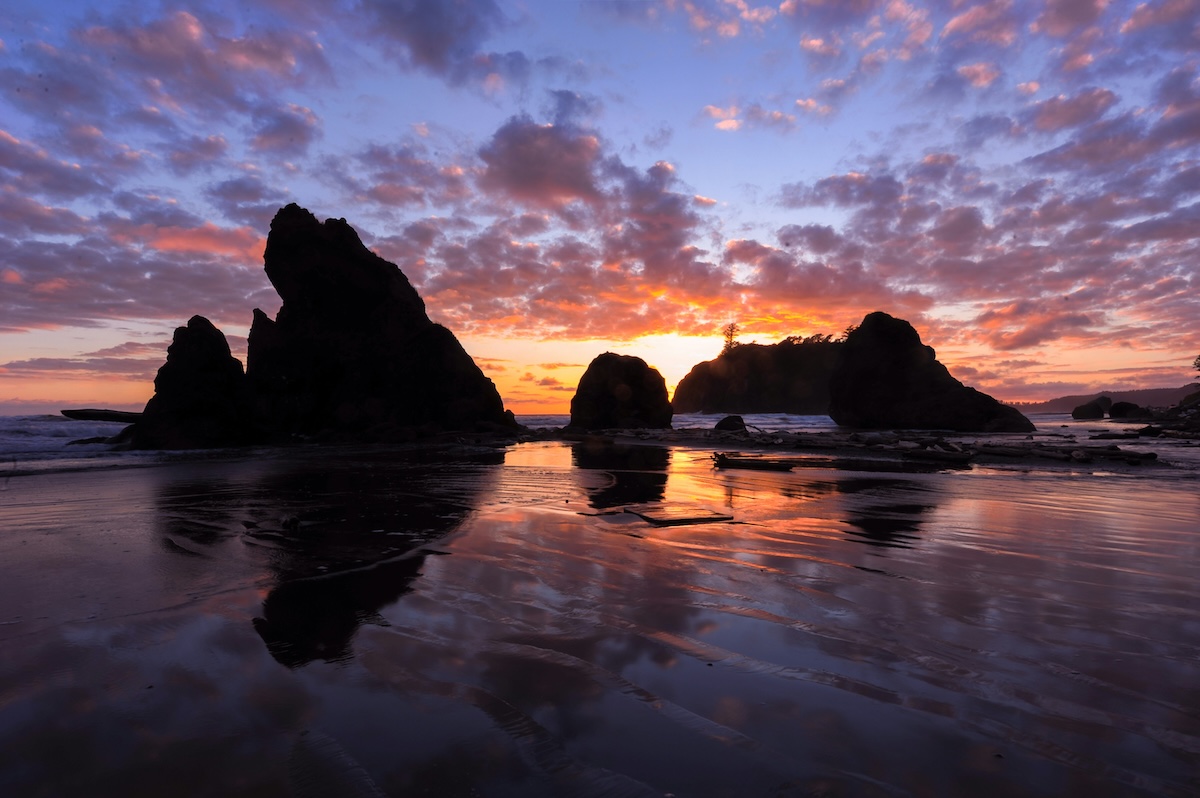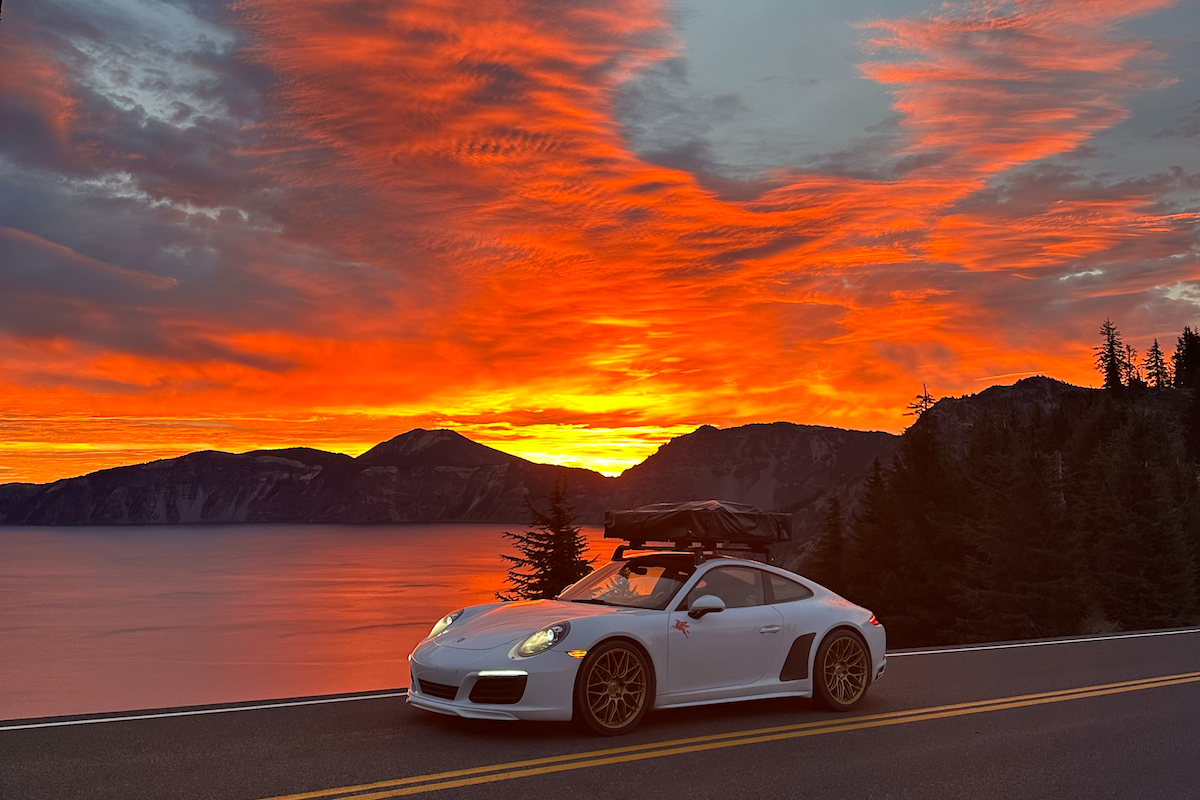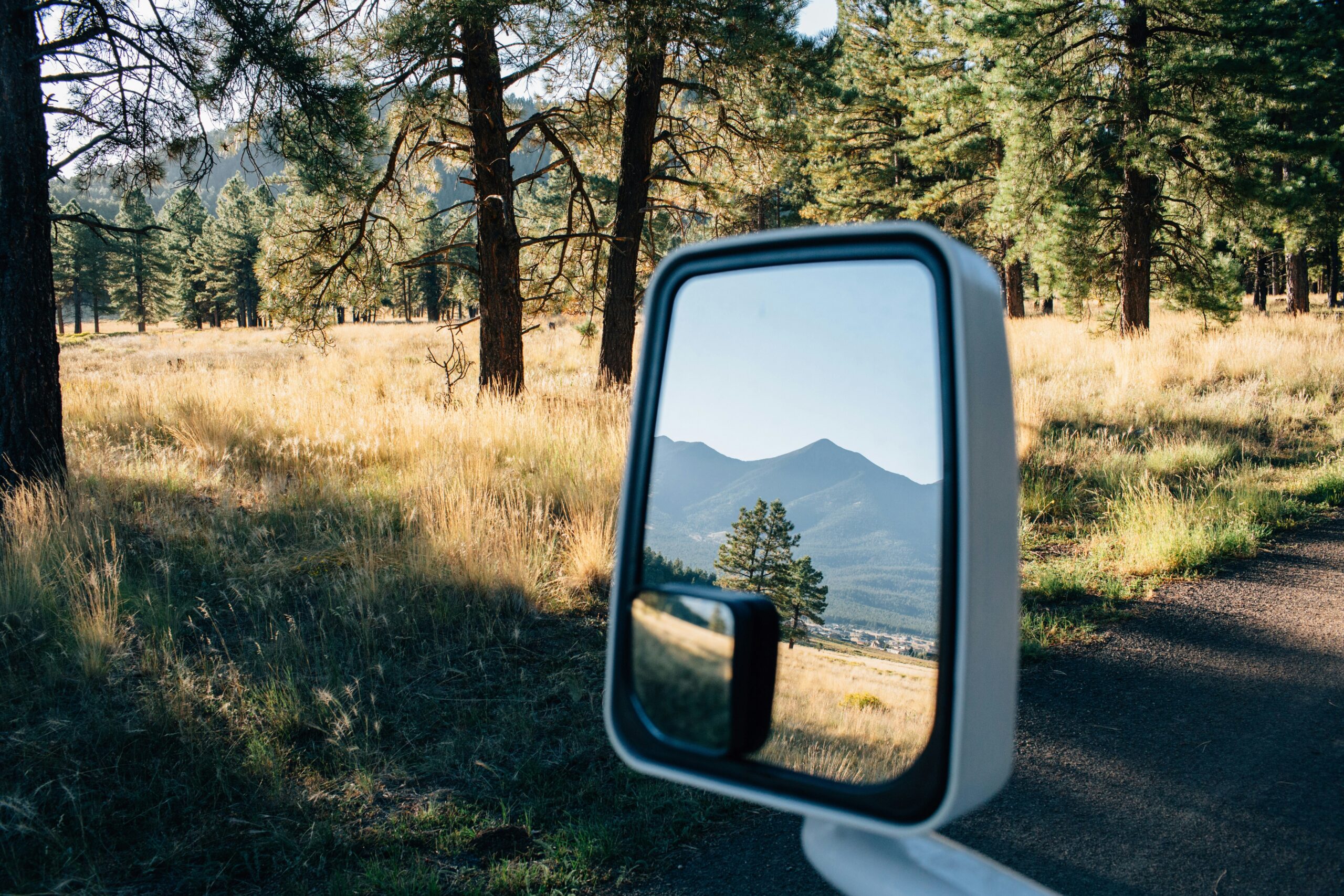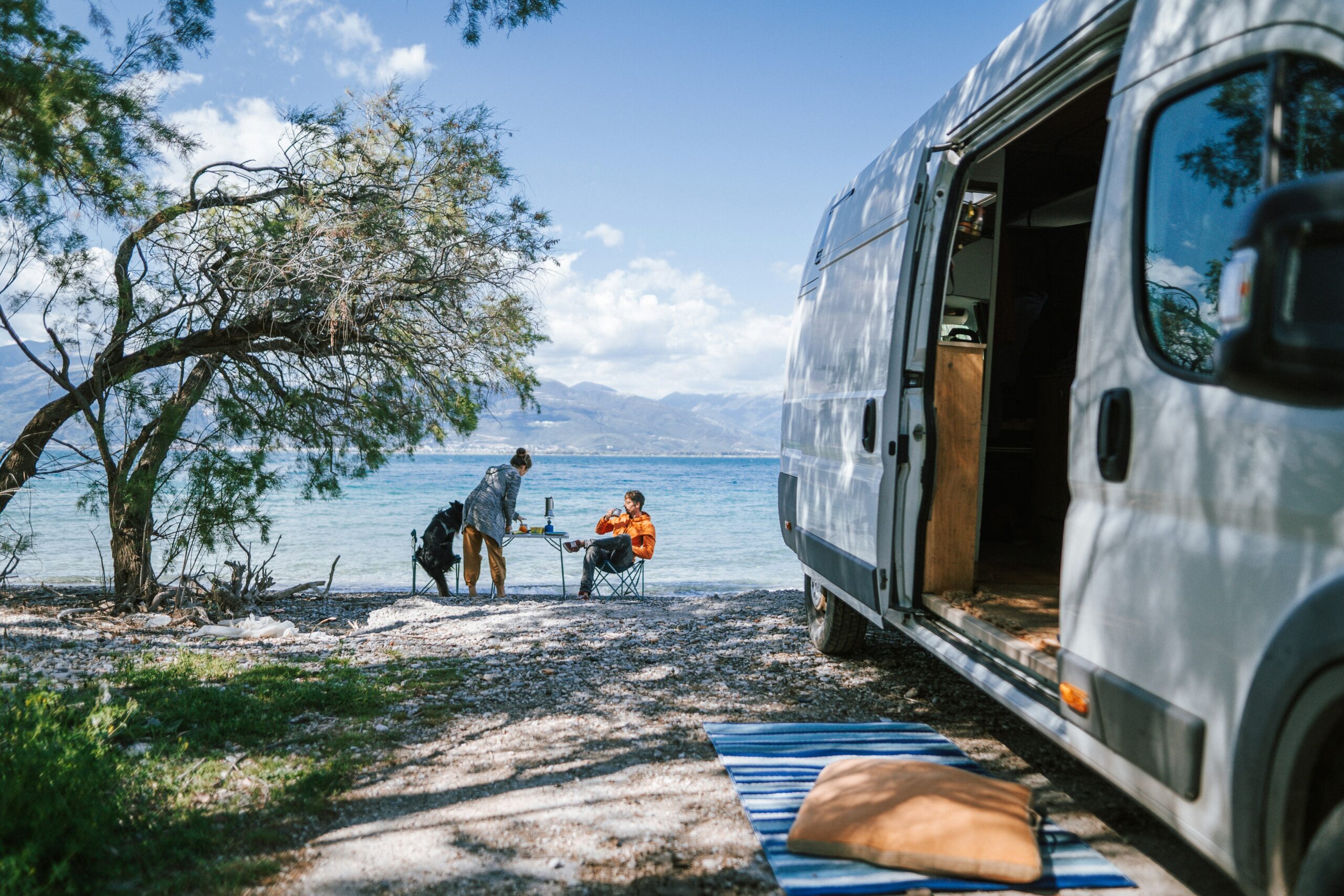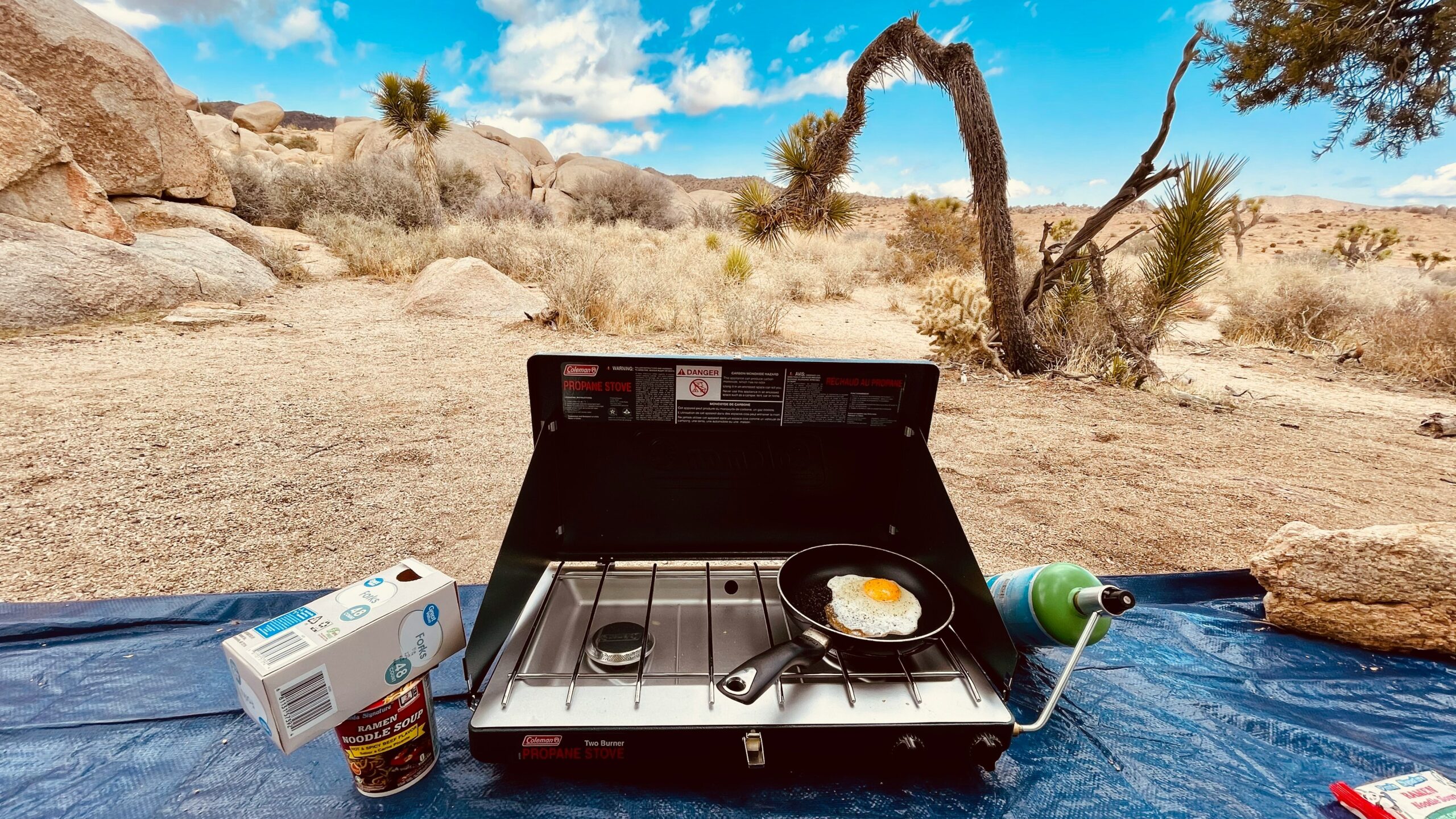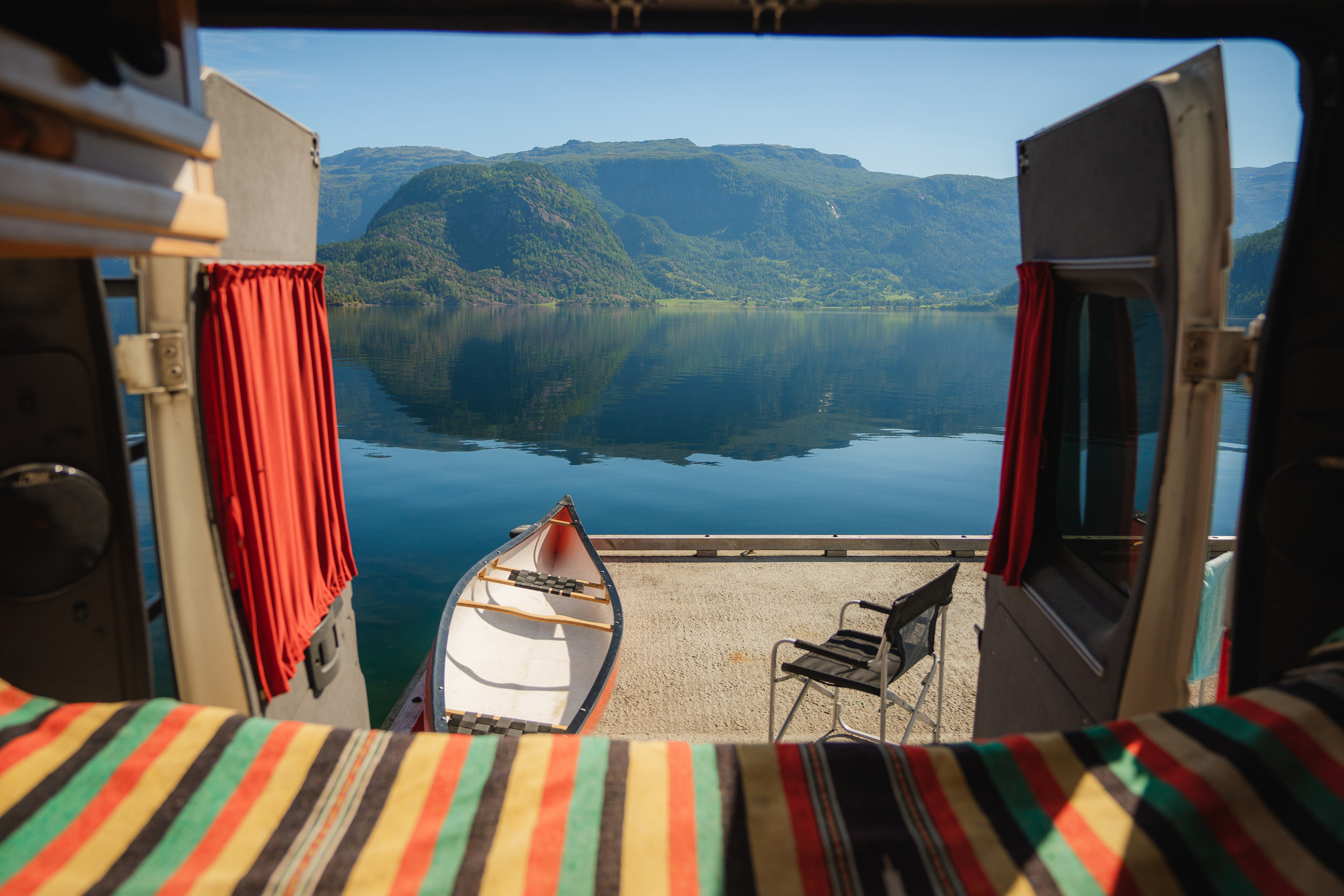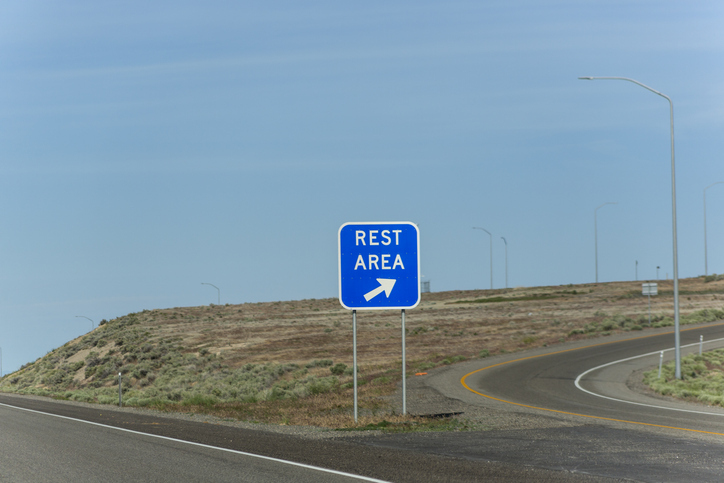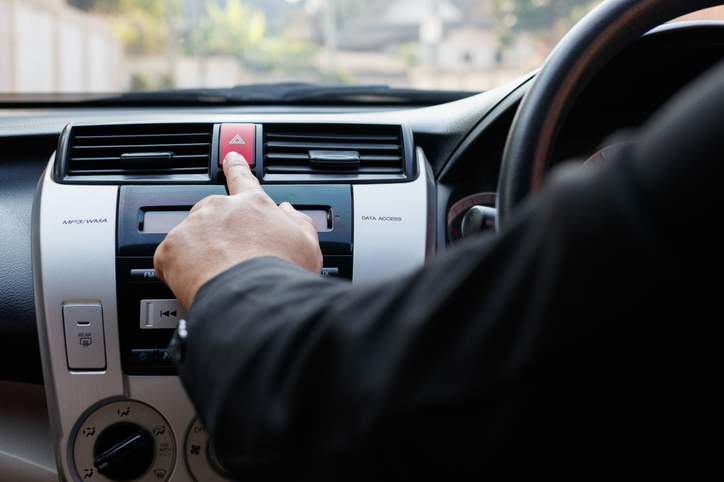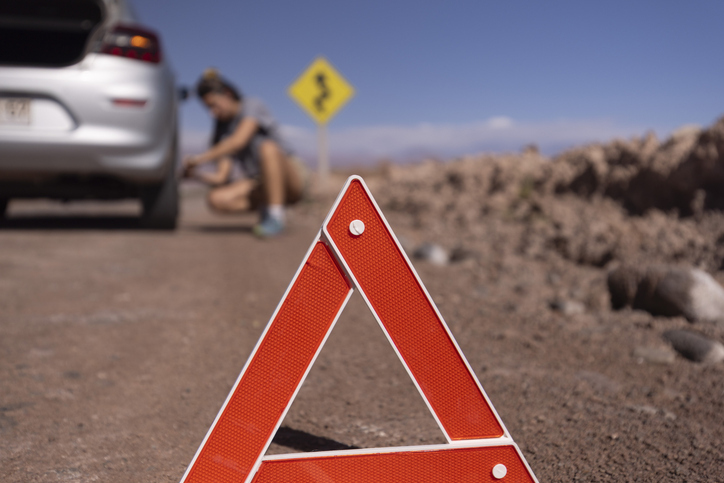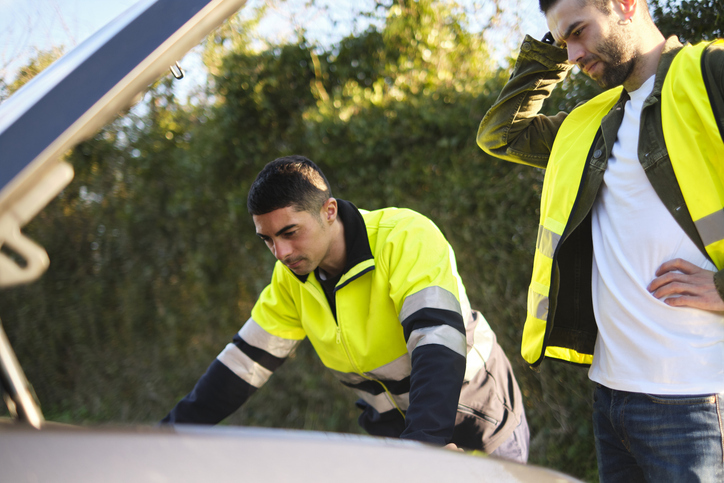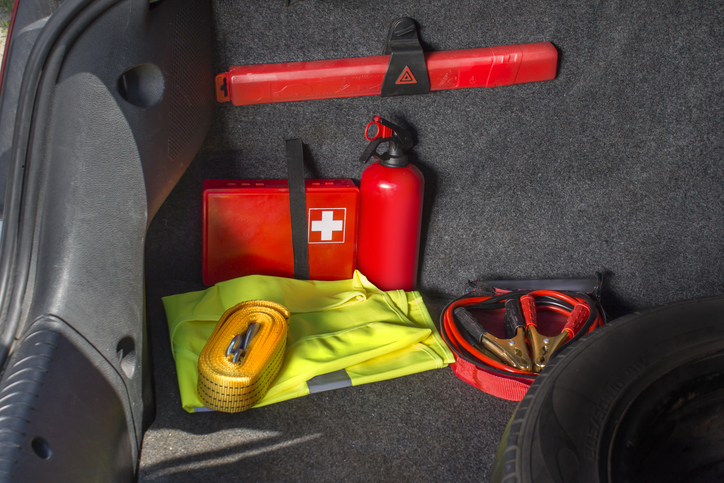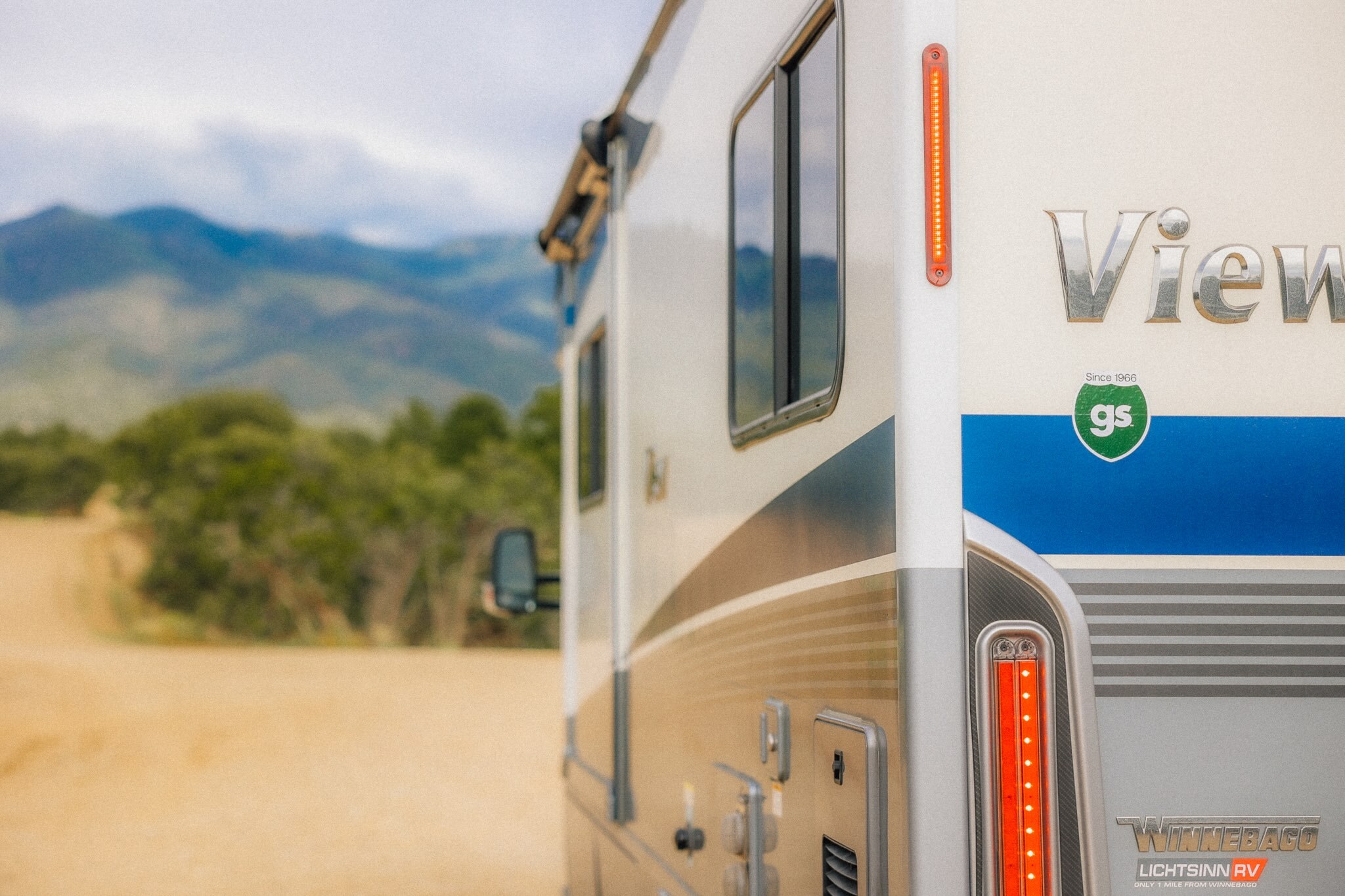Let’s be real: vehicles are just tools. Whether you’re in a land-yacht-sized RV, a two-seat sports car or a big-bodied minivan, you just need to get where you’re going, safely and on schedule. On two wheels, four wheels or more, they’re merely a means to an end.
Whatever! We all know this is “true,” but not true in a deeper sense. Especially when it comes to the epic form of travel known as the road trip, we all recognize that vehicles are not created equal. Many will get you there. Few will get you there in style. And only the most beloved (or notorious) rigs in America’s century-plus history of road-tripping truly changed how we travel.
We set out to celebrate those vehicles. We started with big, frankly out-of-control lists of trucks, vans, RVs, muscle cars, you name it. Then we argued. (The Lamborghini Countach was a fraught topic.) We let the journey shape our list’s destination. (Three Fords? Yep, three Fords.) We winnowed. We ranked. We asked a few friends to ride along.
Here, in reverse order, are our choices for the ten iconic road trip vehicles that made travel what it is today.
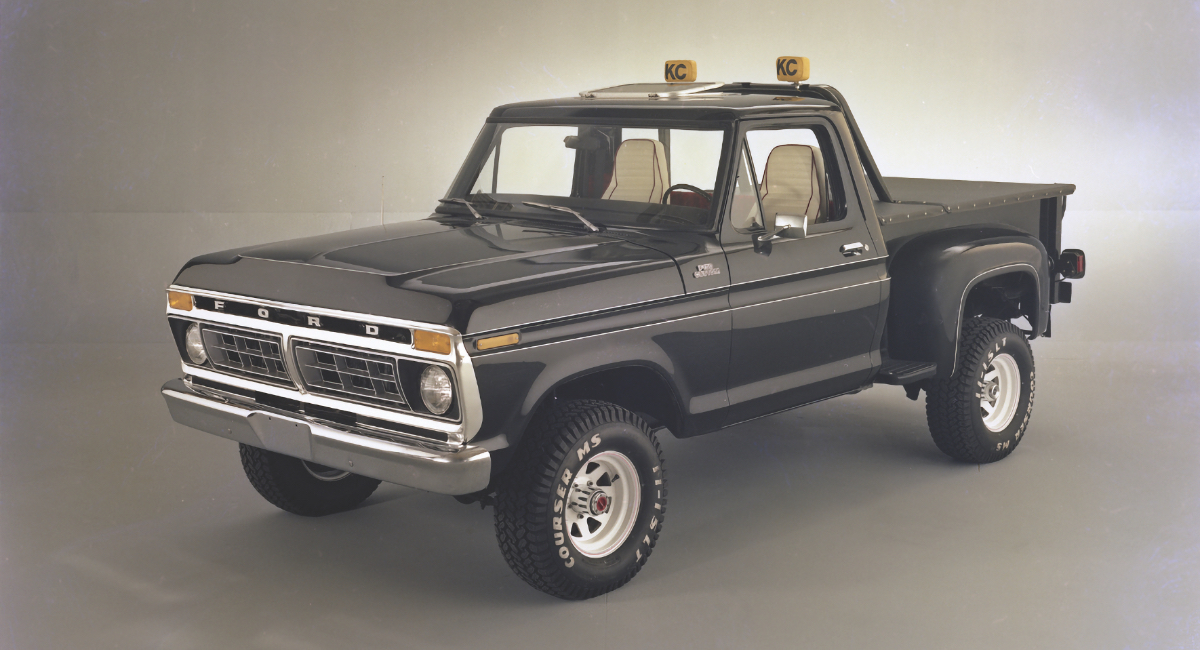
Photo Credit: Ford Heritage Archive
10: The Ford F-150 — Big and Rich
The Era: 1975-Present
Classic Version: Early ’90s models have a special something.
Total Sales: More than 41 million!
Telling Detail: Several bed lengths reflect a heritage of workhorse versatility.
Cultural Moment: Hard to pick one, so we’ll go recent: Robyn Ottolini’s 2020 pop-country hit “F-150.” The late nights, the bonfires…
Michael Charboneau, contributor to the Los Angeles Times, Men’s Journal and others, writes:
If there’s any vehicle that can claim the title of “quintessential American truck,” it’s the Ford F-150. In a production run that spans nearly 80 years, more than 41 million F-series pickups have been sold. Today, you can find them everywhere from remote construction sites to suburban strip mall parking lots.
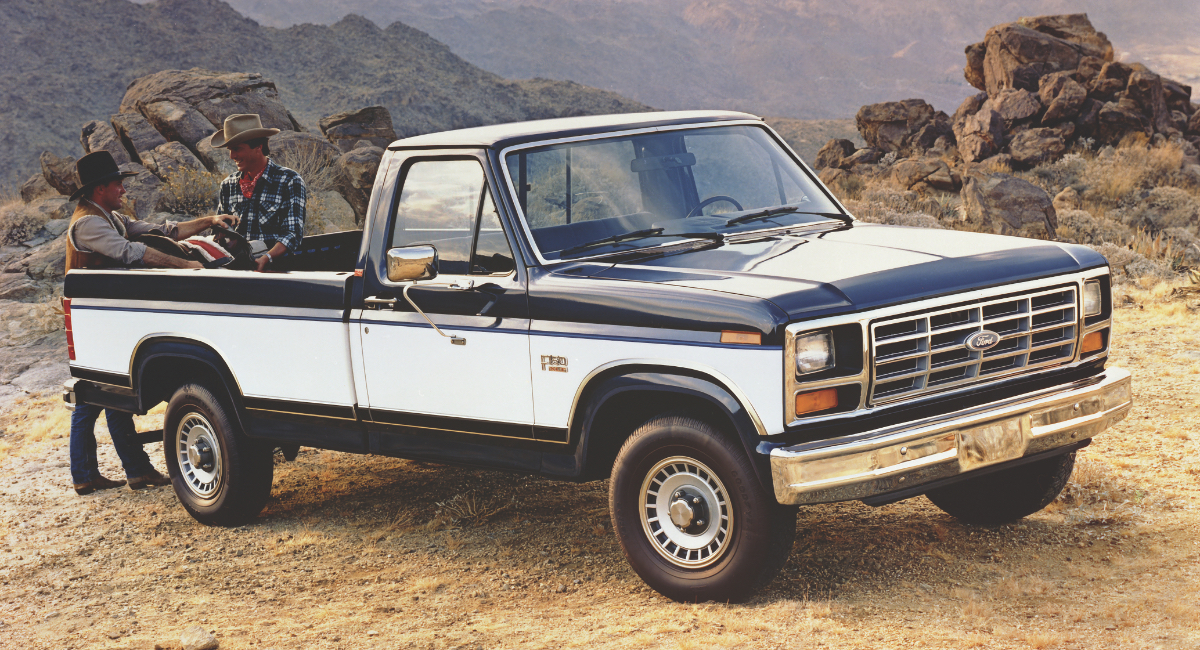
Photo Credit: Ford Heritage Archive
And yet somehow, this truck is not merely commonplace. In fact, the F-150 has long been my unattainable crush. When I was a kid, my dad had a green 10th-gen model. Although I never drove it, I did enjoy a fateful ride in the bed while he shuttled my buddies and me to an adjacent neighborhood for trick or treating. Gliding down the street with tree branches passing overhead, the wind gently rushing in my ears—that sold me on the magic of a pickup.
My crush deepened in high school. As a teenager I wanted nothing more than a regular-cab Bullnose (produced 1980-86, distinguished by its prominent grill and square headlights). To me, the rig’s clean, straight lines and blocky shape were perfect. These trucks looked solid and timeless; built to work, beautiful in their simplicity. I pored over listings online, dreaming about cruising with the windows down, my girlfriend beside me on the wide bench seat. I vividly recall falling for a handsome long bed with a red and silver paint scheme. Unfortunately it was in West Virginia, hundreds of miles away. At 16, I had no money anyway.
What would I have done if I got it? Probably what most people do: drive the hell out of it. Whether you slide a camper in the bed, tow a trailer or just toss a blanket in the back to look up at the stars, the F-150 is an ideal workhorse for exploring. It’s not sporty or fast, but it can promise one thing: It’ll get you there.
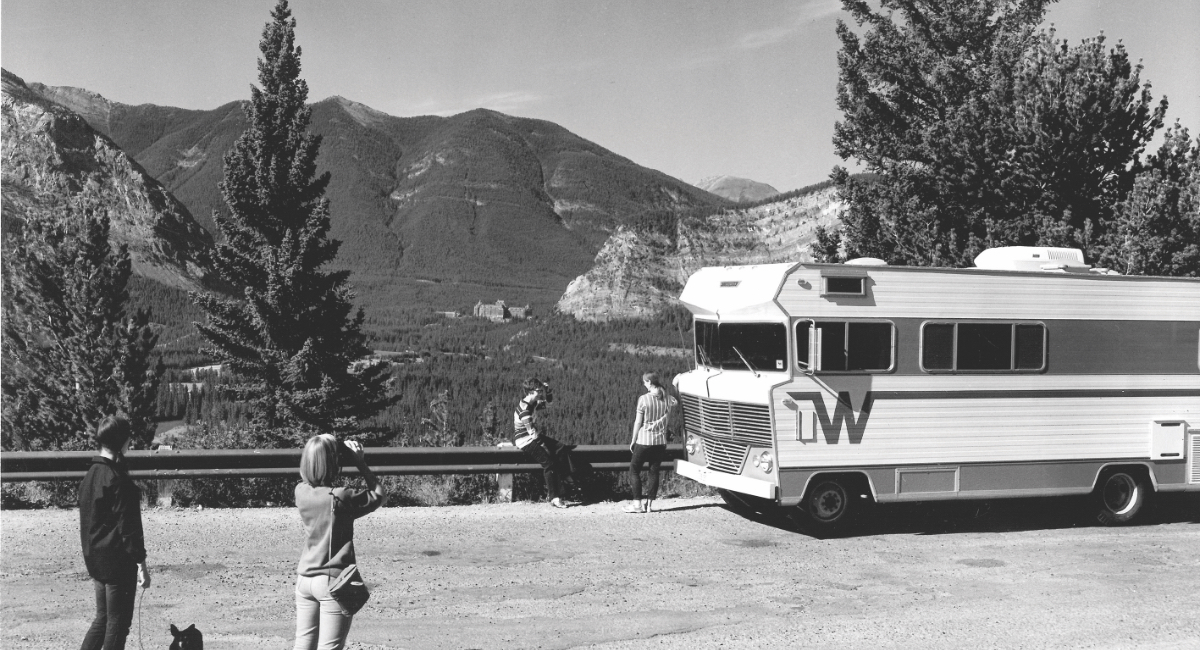
Photo Credit: Winnebago
9: Winnebago Brave — Land of the Free, Home of the…
The Era: 1967-2016 (Multiple reintroductions)
Classic Version: 1974 model with “thermosteel construction.”
Total Sales: ≈150,000+
Telling Detail: The trademark “eyebrow” over the front windshield.
Cultural Moment: In the 1996 film Independence Day, Randy Quaid’s character drives a 1967 Brave
The 1967 Winnebago Brave sent seismic shockwaves across the RV industry. Not only was this motorhome easy to drive with ample interior space, it also came with a long list of standard features, all at a surprisingly affordable price. As a result, it quickly became a smash hit, giving Winnebago its first major success in the motorized RV category.
But the Brave’s influence went well beyond being a popular option for weekend camping trips and cross-country family vacations. As other manufacturers scrambled to duplicate Winnebago’s success, the motorhome’s boxy design and distinctive profile replaced the more van and
bus-like designs that came before it. As a result, the Brave became the template for nearly all of the coaches that followed it, with its influence still felt across the RV industry to this day.
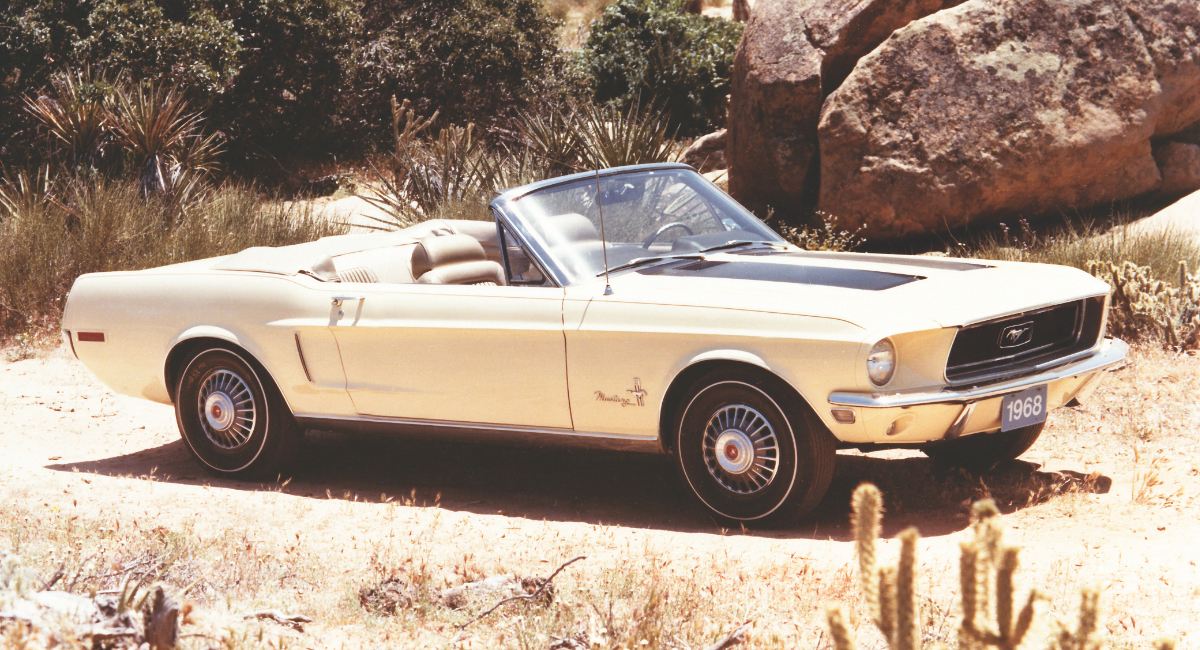
Photo Credit: Ford Heritage Archive
8: Ford Mustang — Born to Run
The Era: 1964-Present
Classic Version: 1965 convertible.
Total Sales: 10+ million
Telling Detail: The famous galloping wild horse badge.
Cultural Moment: Steve McQueen’s 1968 Highland Green Mustang GT Fastback in the classic film Bullitt
With their distinctive looks and overabundance of power, American muscle cars, like the Chevy Camaro, Dodge Challenger and Pontiac GTO, are the stuff of open-road fantasy. But for our money, nothing beats the dream of climbing behind the wheel of a classic 1965 Ford Mustang convertible, dropping the top and heading out for a long cruise up the coast. Any coast.
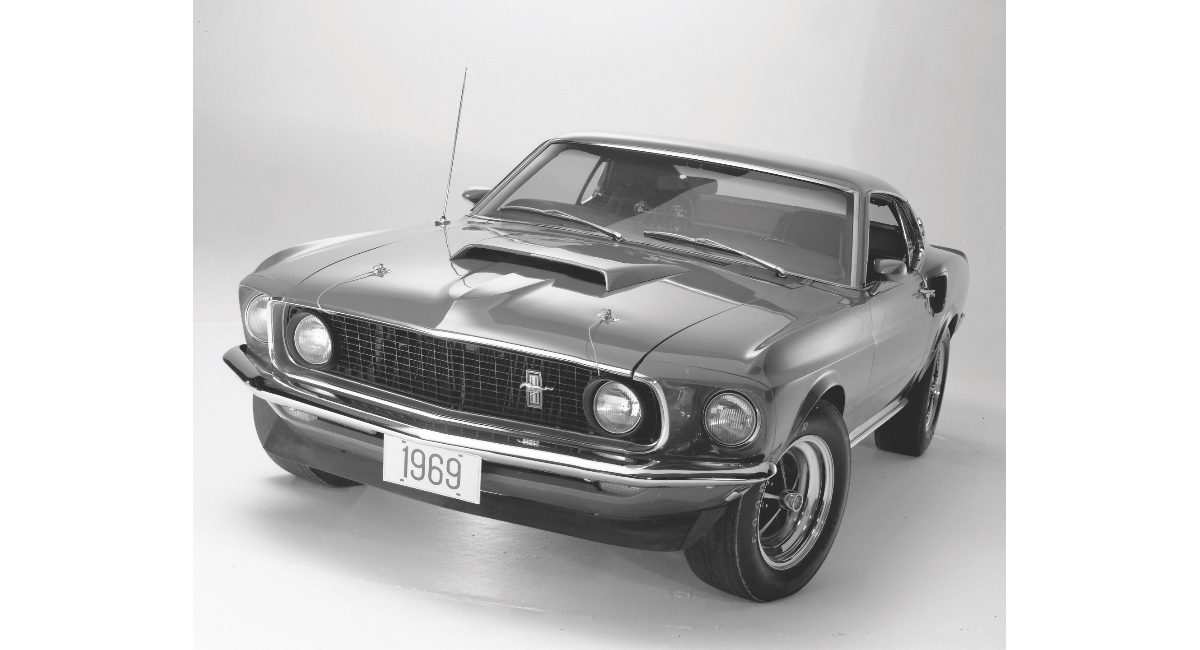
Photo Credit: Ford Heritage Archive
First introduced in 1964, the Ford Mustang has been an American institution ever since. And while competitors have come and gone, this car remains a Ford stalwart. The original model came with a 271-horsepower engine and could do zero to 60 in 5.9 seconds. (Not bad for $3,163.) From the get-go, this car oozed cool, quickly becoming both a pop-culture and road icon. Today, this pony can still run, and the current convertible is as drool-worthy as ever.
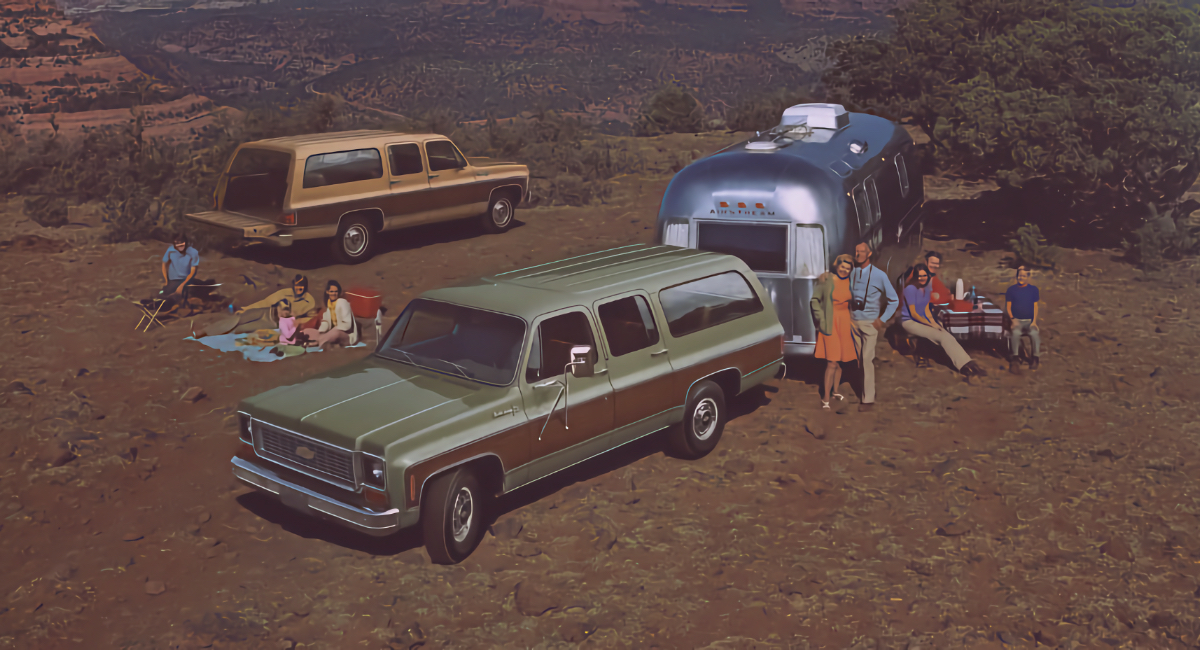
Photo Credit: GM Archives
7: Chevy Suburban — Suburban Cowboy
The Era: 1934-Present
Classic Version: 1973 Custom Deluxe
Total Sales: 10+ million
Telling Detail: Extra-long rear side window, lighting up “the way back.”
Cultural Moment: In 2019, the Suburban became the first vehicle awarded a star on the Hollywood Walk of Fame for its recurring prominence in the movies.
Few vehicles have occupied so many roles—and so much of America’s automotive attention—for so long. Released in 1934 in the era of woody station wagons, the Suburban offered something novel, or at least distinct. Neither a station wagon nor a truck, it eschewed wood for steel paneling and was marketed to both families and business owners with goods and people to move. Chevrolet called it the “Suburban Carryall”, a rig ready for a new generation of road tripper and laborer.
The 20th Century would go on, and the Suburban would go with it, ultimately becoming the world’s longest-utilized automobile nameplate. In the ’50s, the Suburban was first featured in the movies, and has since made more than 1,700 appearances. In the ’70s, it ushered in the modern era of SUVs, a role that would make it a practical choice for parents and police, just as common in high-speed chases as it was at soccer fields. Twelve generations later, like any true star, the Suburban can play most any part.
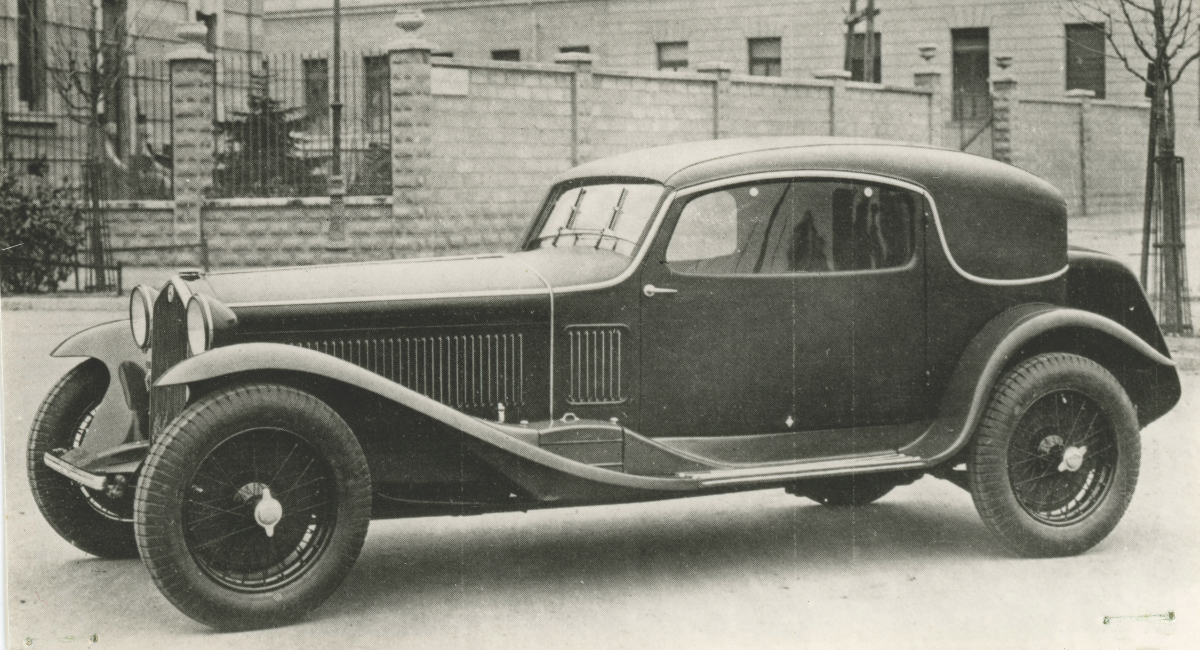
Photo Credit: Centro Documentazione Alfa Romeo Ariese
6: Alfa Romeo 6C 1750 GT — That’s Amore!
The Era:1927-1954
Classic Version: 1929 GT model
Total Sales: 3,000
Telling Detail: The 6C name nods to the six-cylinder engine.
Cultural Moment: This Italian icon won numerous major European races throughout its production history.
On road, on track, in whatever era of its three-decade life, the Alfa Romeo 6C 1750 swaggered with style and power, speed and performance. But it was the 1929 GT edition that bent road-trip history to its will, adding a dash of luxury and comfort to the mix. As one of the first vehicles purpose-built for long-distance travel, it helped promote the idea that driving wasn’t just about getting from point A to point B.
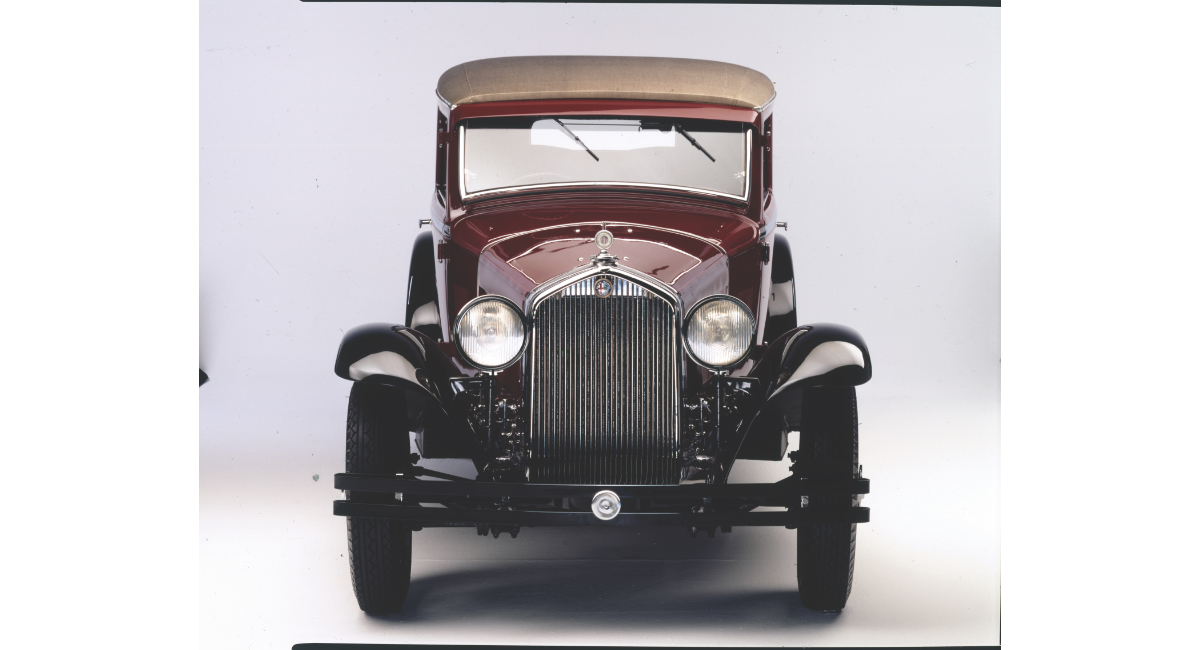
Photo Credit: Centro Documentazione Alfa Romeo Ariese
Perhaps more importantly, this was the first automobile to carry the “GT” or “Grand Tourer” designation—and far from the last. In the decades that followed, everyone from Ford and Chrysler to Porsche and Ferrari built a touring-focused “GT” car of some sort. Most of those models followed the 6C 1750 template, marrying performance and comfort to deliver a road-trip-worthy driving experience. And while this vehicle may not be as well-known as some of the others on this list, they all owe it a debt of gratitude.
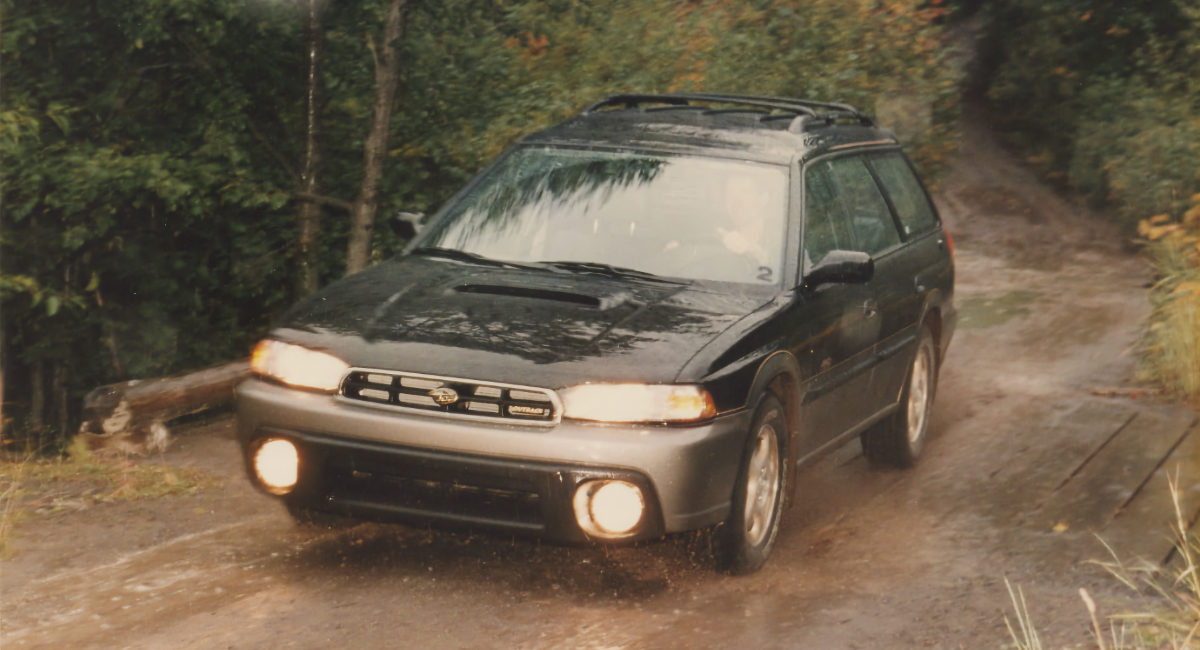
Photo Credit: Subaru
5: Subaru Outback — Home Ranger
The Era: 1994-Present
Classic Version: The 2001 stands out, with many still on the road.
Total Sales: About 3 million in the U.S. as of 2024.
Telling Detail: All-wheel drive, whether you need it or not.
Cultural Moment: In 1994, Paul “Crocodile Dundee” Hogan introduced this model with a confident Australian twang: “This here is the all-wheel-drive Subaru Outback.”
Kimberly King Parsons, author of acclaimed novel We Were the Universe, writes: When my family and I fled New York for Portland in 2017, the Subaru welcoming committee was idling curbside at the airport. The taxi line: Outback. The rental lot: Outback. Our new neighbors: an Outback with a “Coexist” sticker. By week two, I’d developed a tic—pointing out Outbacks to my kids, who’d long stopped caring. “There’s one! There’s another! My god, there’s a convoy!” The migration from Queens to this Subaru sanctuary felt like stumbling into some automotive monoculture where variety had been sacrificed to the gods of practical wheel clearance. We’d traded concrete canyons and subway grime for mountains that made us gasp and waterfalls so perfect they seemed computer-generated. We needed a car to match our new surroundings, something that wouldn’t fl inch at mud or judge us for tracking pine needles into its footwells. Soon enough, we bought a (very!) used Outback of our own. The kids named it Roo.
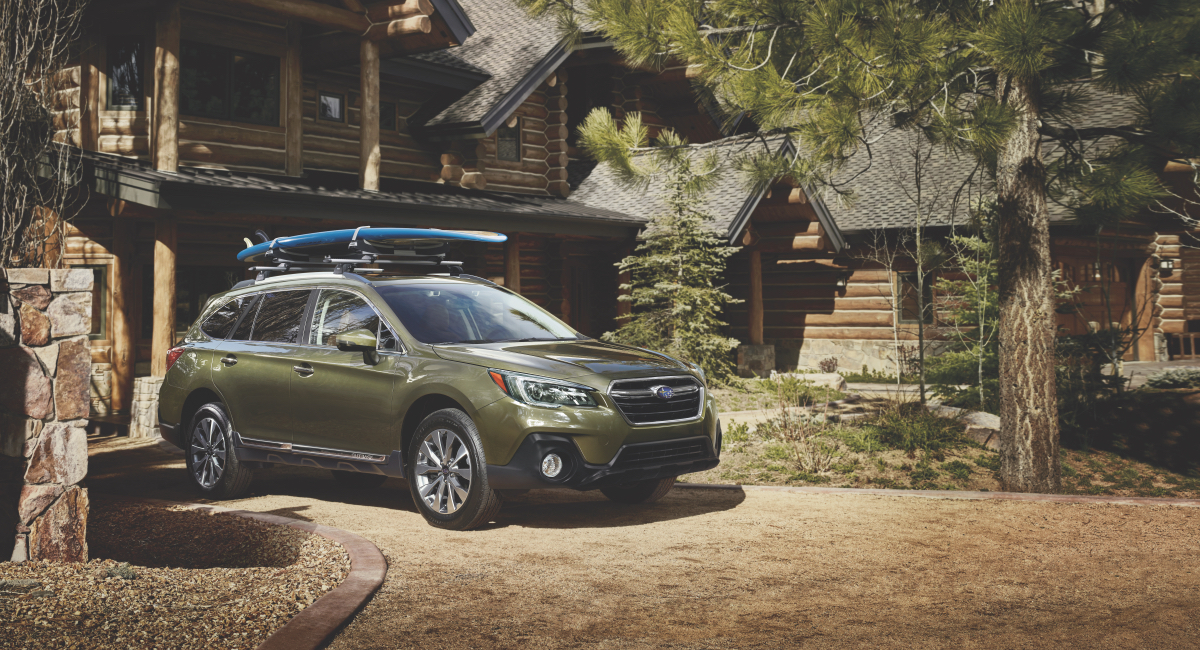
Photo Credit: Subaru
What nobody tells you about the Outback is how it beautifully embodies the charming paradoxes of the nation’s crunchier corners. (Subaru love runs strong in New England and the Rockies. In the cities of the Northwest, it’s almost impossible to look to the middle distance without seeing one, or seven.) It’s a vehicle designed for rugged adventure that may spend most of its time in Trader Joe’s parking lots. The all-wheel-drive system that Subaru made standard is both sometimes utterly necessary and often overkill—you’re prepared for apocalyptic weather events and driving conditions, and you can get to the coffee shop to chat about them.
We loved the wheels off of Roo, and recently traded her in for an electric van. These days I look at Outback drivers with gentle affection and nostalgia. Maybe that’s what makes it an icon: its role as the first chapter in so many outdoorsy road-trippers’ journeys. The Outback was our gateway to something with more batteries, more smugness, more rooftop solar. But I sometimes miss that sturdy wagon. Our van has impressive range, but it lacks that sense of belonging, that quiet announcement of Pacific Northwest citizenship that comes standard with every Outback. Lucky for us, we still have 17 reusable grocery bags and a forgotten kombucha rolling around somewhere under the passenger seat.
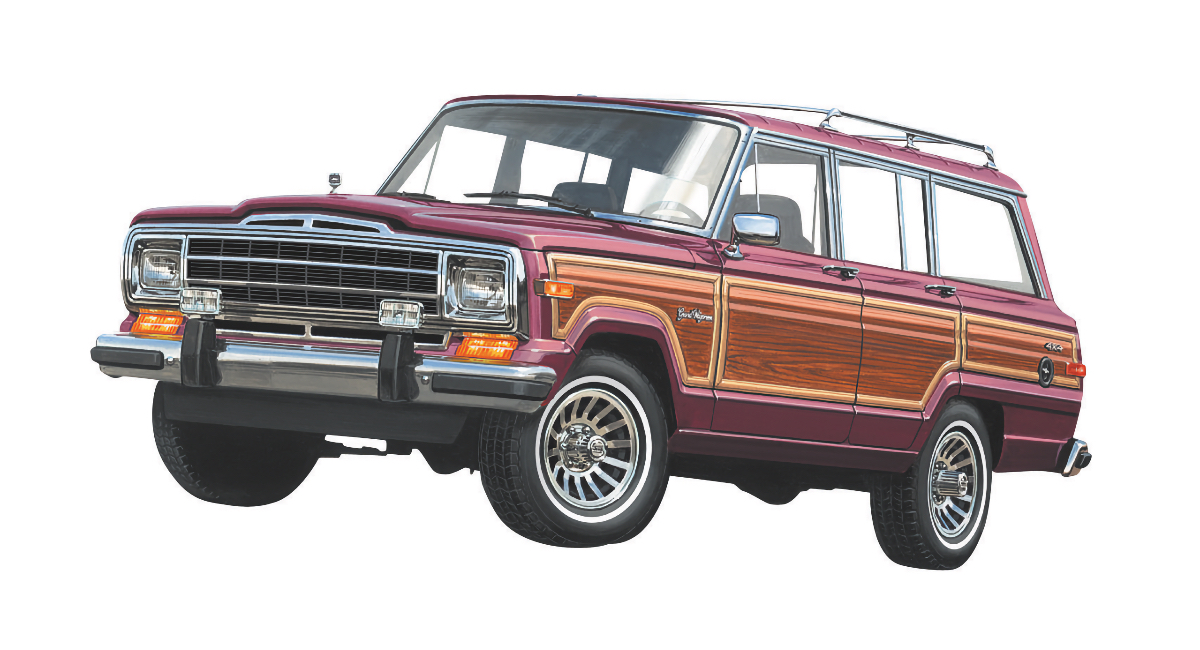
Photo Credit: Stellantis
4: Jeep Wagoneer — It’s Yelling Timber
The Era: 1962-1993
Classic Version: 1984 Grand Wagoneer
Total Sales: 500,000+
Telling Detail: Long body, high clearance.
Cultural Moment: In season three, episode two of Breaking Bad, Skyler White’s 1991 Wagoneer sits in the driveway as Walt throws a pizza on the roof of his house.
In 1962, decades before luxury SUVs would become the most popular residents of American driveways, the Jeep Wagoneer broke automotive ground. Catering to drivers looking for space, utility and comfort, the Wagoneer wasn’t just an early SUV. It was one of the most reliably innovative vehicles of its time. The early models introduced features like power steering and braking, ceiling lights, automatic windows and air conditioning. In the decades to follow, the distinctive woody exterior would define the Grand Wagoneer models featuring V8 engines and Quadra-Trac four-wheel drive systems.
As the era of station wagons gave way to minivans in the ’80s, the stalwart SUV remained a favorite among America’s well-heeled travelers. But while the Wagoneer was an early innovator, its body barely changed over the decades and it was discontinued in 1993. Then, after nearly three decades on the shelf, the Grand Wagoneer reemerged in 2022 as a high-end SUV ready for a new era of automotive luxury.
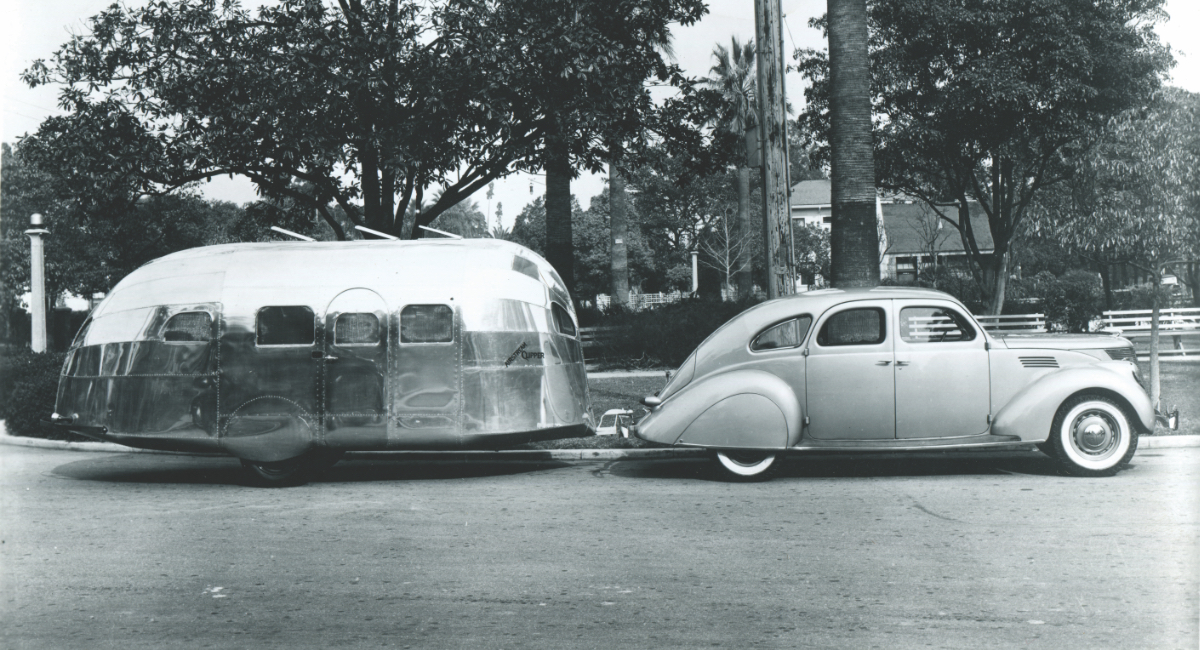
Photo Credit: Airstream Heritage Center
3: The Airstream Clipper — Silver Gets the Gold
The Era: 1936-1941
Classic Version: The original 1936 trendsetter.
Total Sales: Unknown
Telling Detail: The riveted aluminum construction, a tribute to aircraft engineering.
Cultural Moment: In 2024, the Airstream Heritage Center exhibited “Clipper #1.”
Mattew Every, Contributor to Field & Stream and Wildsam and sometime Airstream resident, writes: The travel trailer is, by its nature, a nostalgic genre of vehicle. The phrase brings to mind throwback campsites and endless summers on the road. The reason for this, if you had to pick just one, is Airstream. Travel trailers have an inherent retro appeal, yet most of them on the road today look completely different than their predecessors. Most, except for Airstream—which, despite advances in technology and design, stays true to the aesthetics of Wally Byam’s 1930s design for The Clipper.
When I was confronted with a sprawling lot of new trailers at a dealership in 2020, I don’t exactly know why I landed on a Bambi, the Clipper’s 20-foot baby sibling. There was just a pride of ownership that I knew I’d have a hard time finding in another vehicle. It felt like a good pair of jeans, an L.L.Bean canvas tote, a Zippo lighter or a sturdy leather jacket. I knew it would wear in rather than wear out, and I couldn’t wait to watch it get better with age after every adventure.
With thousands of miles logged on my Airstream in the past five years, I can say I made the right decision. My Bambi doesn’t have any slide-outs or giant televisions or a whole lot of space compared to many trailers today. But open the door and you’ll feel right away that it’s something of quality. The Airstream has always been built to last. Mine has only gotten better with age. Every dent or scuff in the floor serves as a reminder that I’ve been places. And it’s those reminders that make an otherwise cold, riveted metal capsule feel like my home on the road.

Photo Credit: Greg Gjerdingen via WikiMedia
2: Dodge Caravan — Mini to the Max
The Era: 1984-2020
Classic Version: 2005, featuring Stow ‘n Go seating storage.
Total Sales: 14 million+
Telling Detail: Crosshair grille.
Cultural Moment: In 1996, MotorTrend magazine names the Caravan the “Car of the Year.”
Vans existed before 1984. But until then, no one had released one geared toward families, short enough to fit in a garage, low enough to make loading kids a breeze, nimble enough that it would feel like driving a compact car around America’s suburbs. Enter Lee Iacocca, the wily auto exec who had been dumped by Ford because, among other reasons, he’d been pushing for this concept. When Iacocca joined the lagging Chrysler in 1978, his team started designing a “minivan” atop a car chassis. Six years later, it would hit the market as the Dodge Caravan, alongside its near-identical cousin, the Plymouth Voyager.
Both were legendary vehicles—and the first-ever minivans—but it was the Caravan that left an indelible mark on family travel, becoming one of the country’s best-selling vehicles during its nearly 40-year run. (In 2019, the Caravan accounted for 54 percent of all minivans sold in the United States.) With its sliding doors, collapsible rear seating and ubiquity on roads across the U.S., the Caravan changed the way families thought about journeys near and far.
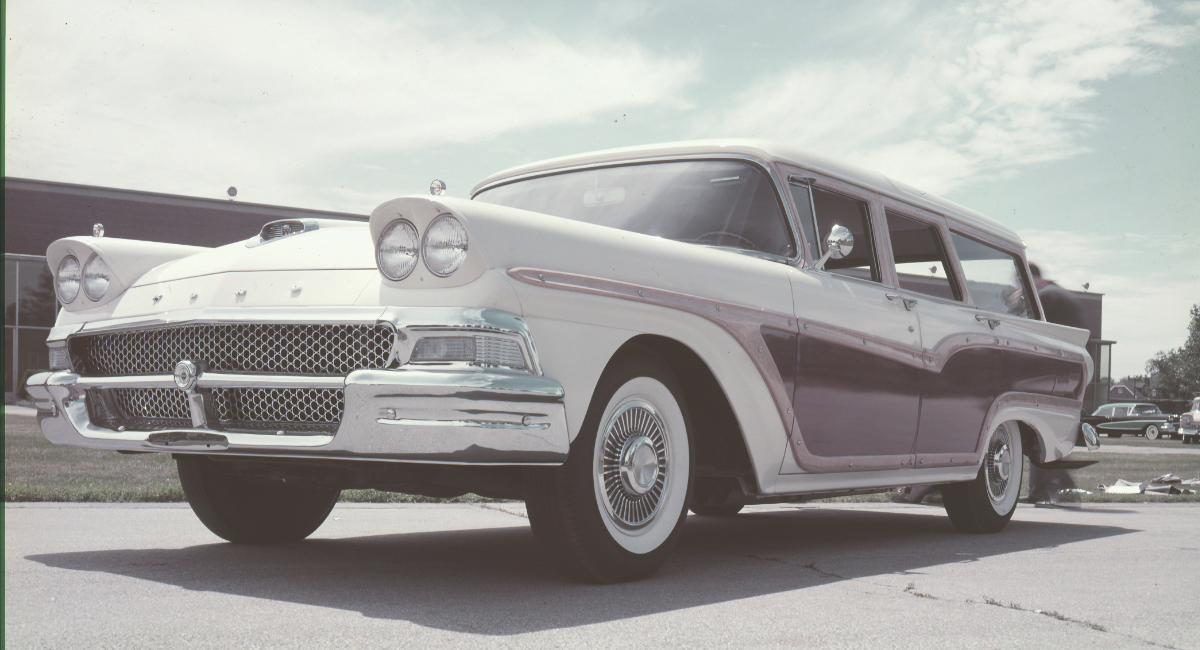
Photo Credit: Ford Heritage Archive
1: Ford Country Squire — King of the Road
The Era: 1950-1991
Classic Version: 1966 model with Magic Doorgate.
Total Sales: 1.8 million
Telling Detail: Distinctive wood paneling,
Cultural Moment: A 1979 Country Squire was the stand-in for the “Family Truckster” in National Lampoon’s Vacation.
Number one? Hear Us Out:
It was the 1950s. The war was in the rear-view mirror, the country rode high on optimism and everybody liked Ike. Middle-class income was on the rise; road trip culture was taking hold thanks to the president’s ambitious Interstate Highway System. Cross-country sojourns and family vacations were all the rage.
It was a time that changed how we travel in this country, right up to today. And the vehicle of that moment, more than any other, was the Ford Country Squire.
With its signature wood-grain paneling, expansive cargo space and room for eight, the Country Squire became a symbol of suburban success. This car—or one of its many imitators—found its way into countless driveways. And even when parked at a white picket fence, it hinted at the freedom of the open road. The “woodie” station wagon even played a direct role in the rise in popularity of the national parks as family destinations. During the 1950s, visitation at those iconic locations rose to over 25 million a year, on its way to 80 million just a decade later.
This wasn’t Ford’s first station wagon, of course, but it would become its most successful. The vehicle first rolled off the assembly line in 1949, although it wasn’t officially branded as the Country Squire until two years after that. By 1953, its trademark wooden side panels were replaced with simulated wood-grain metal, which remained a distinctive feature across eight generations. By the end of the 1950s, the wagon was selling 25,000 units a year, before reaching a peak of 143,000 in 1973. By that point, it had already achieved icon status—a true piece of Americana.
By the time the Country Squire was retired in 1991, it had been in production for over 40 years. By then, our appetite for station wagons had been supplanted by the ever-increasing demand for minivans and SUVs. But there is no doubt that this car left an indelible mark on American culture, becoming the most recognizable road trip vehicle to ever roam the country and creating an entire genre of road-trip rides.
For us, this Squire is the king.
This article originally appeared in Wildsam magazine. For more Wildsam content, sign up for our newsletter.
The post The Most Iconic Road Trip Vehicles of All Time appeared first on RV.com.
